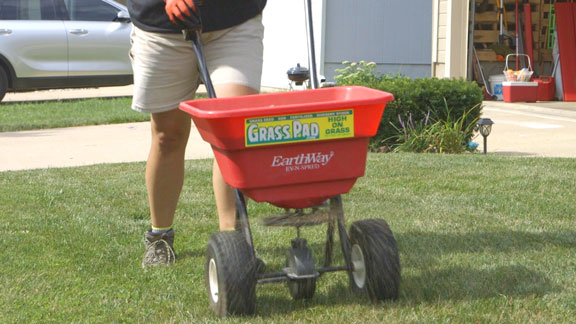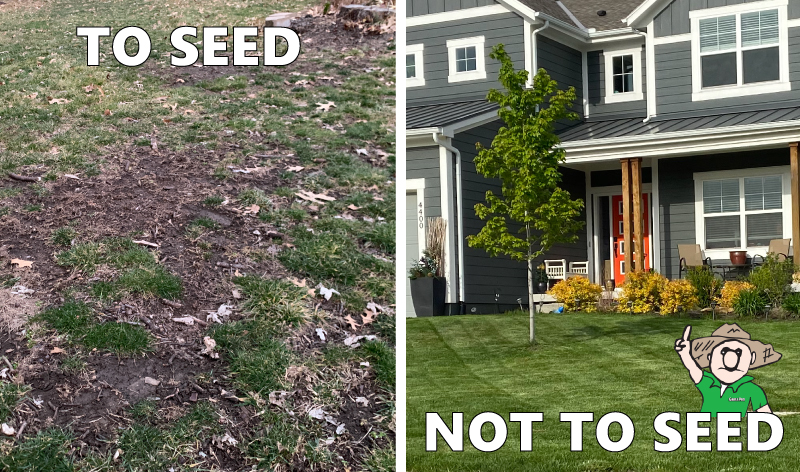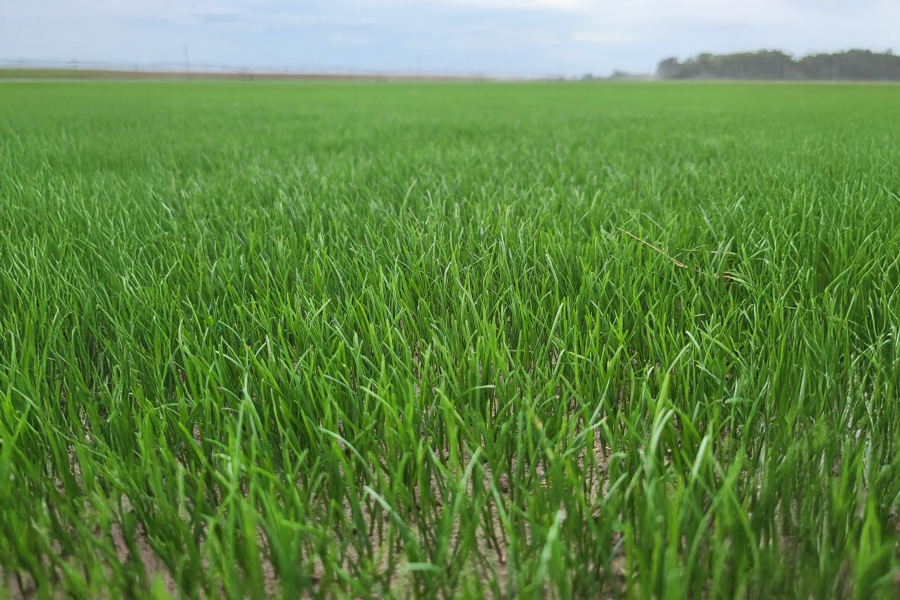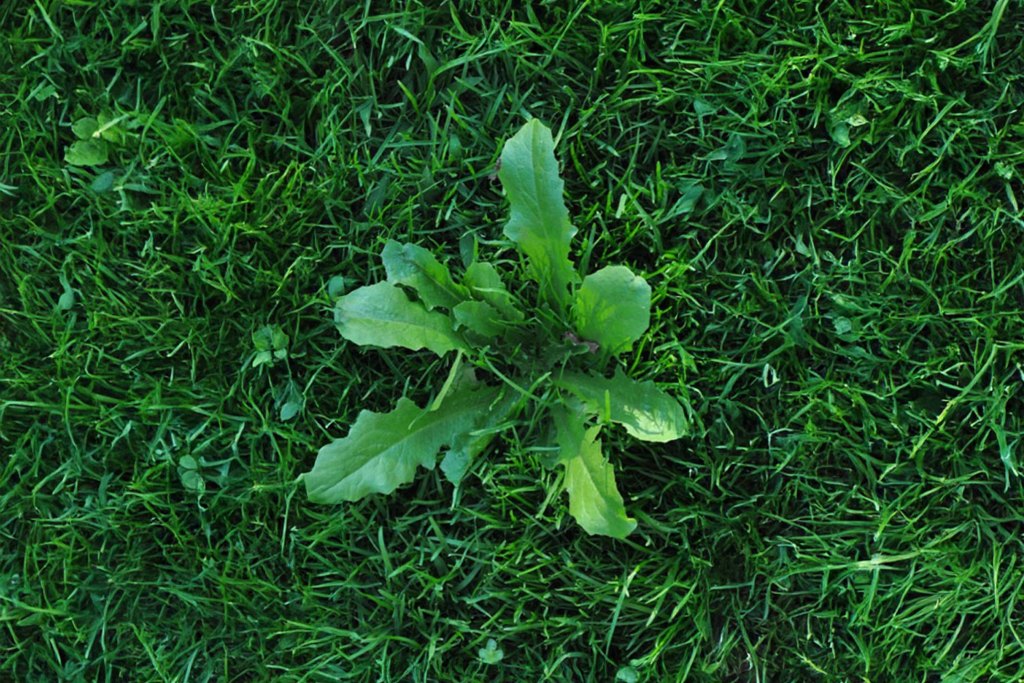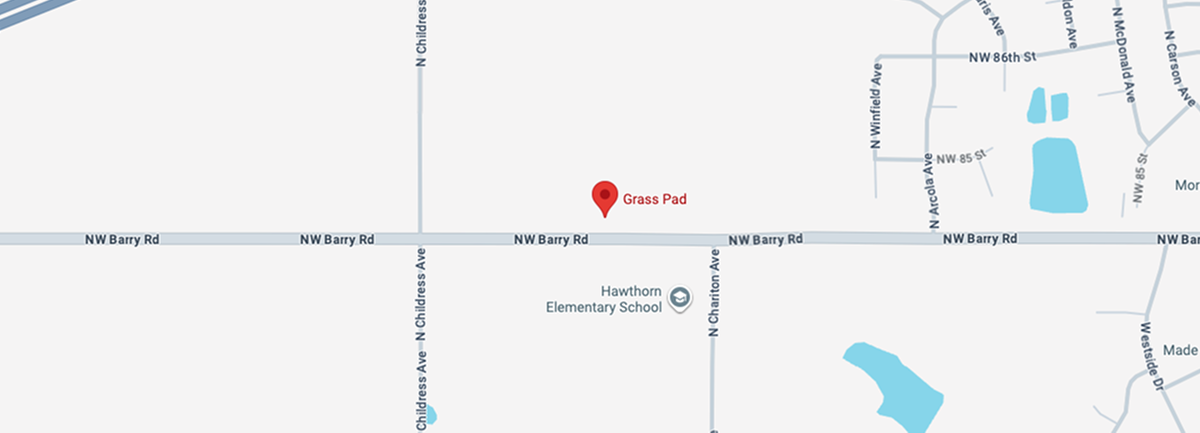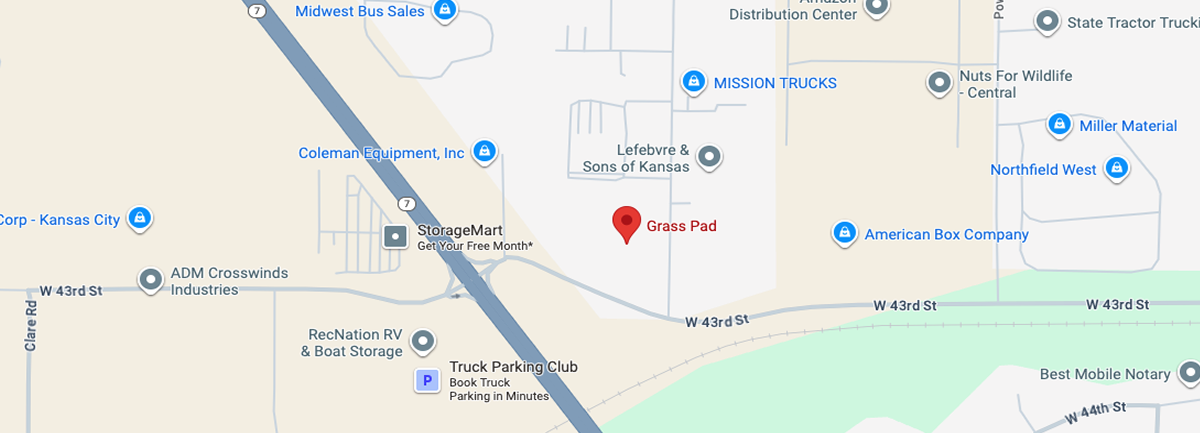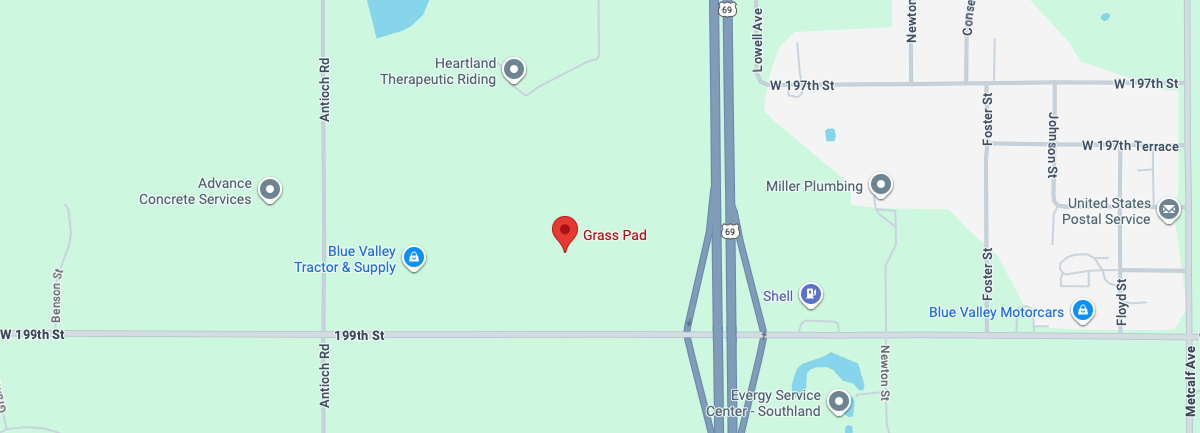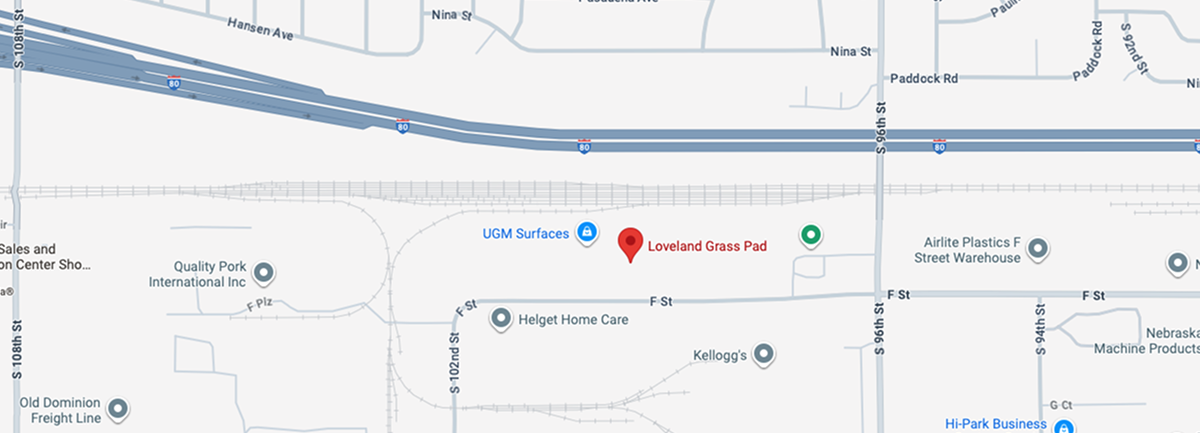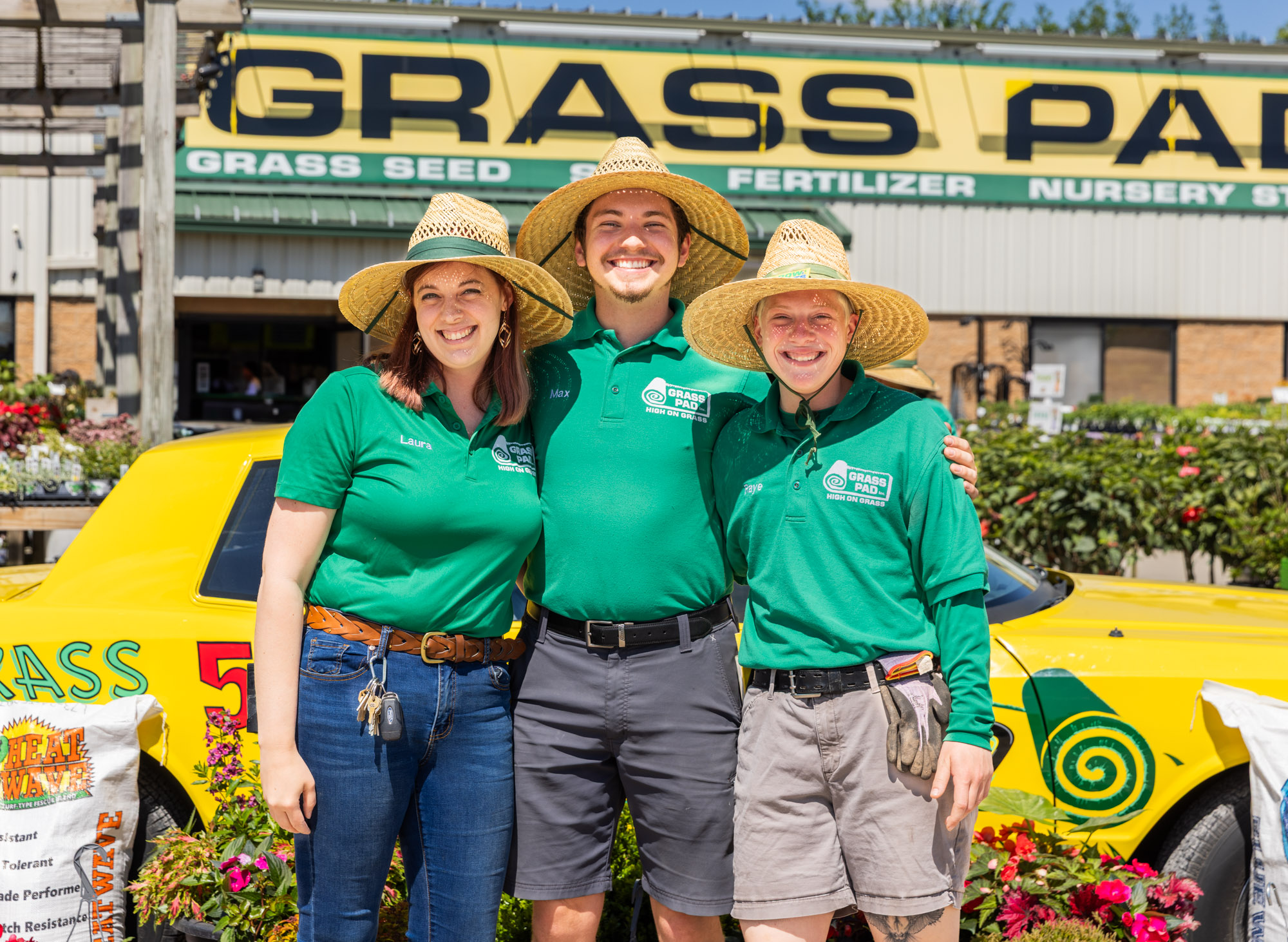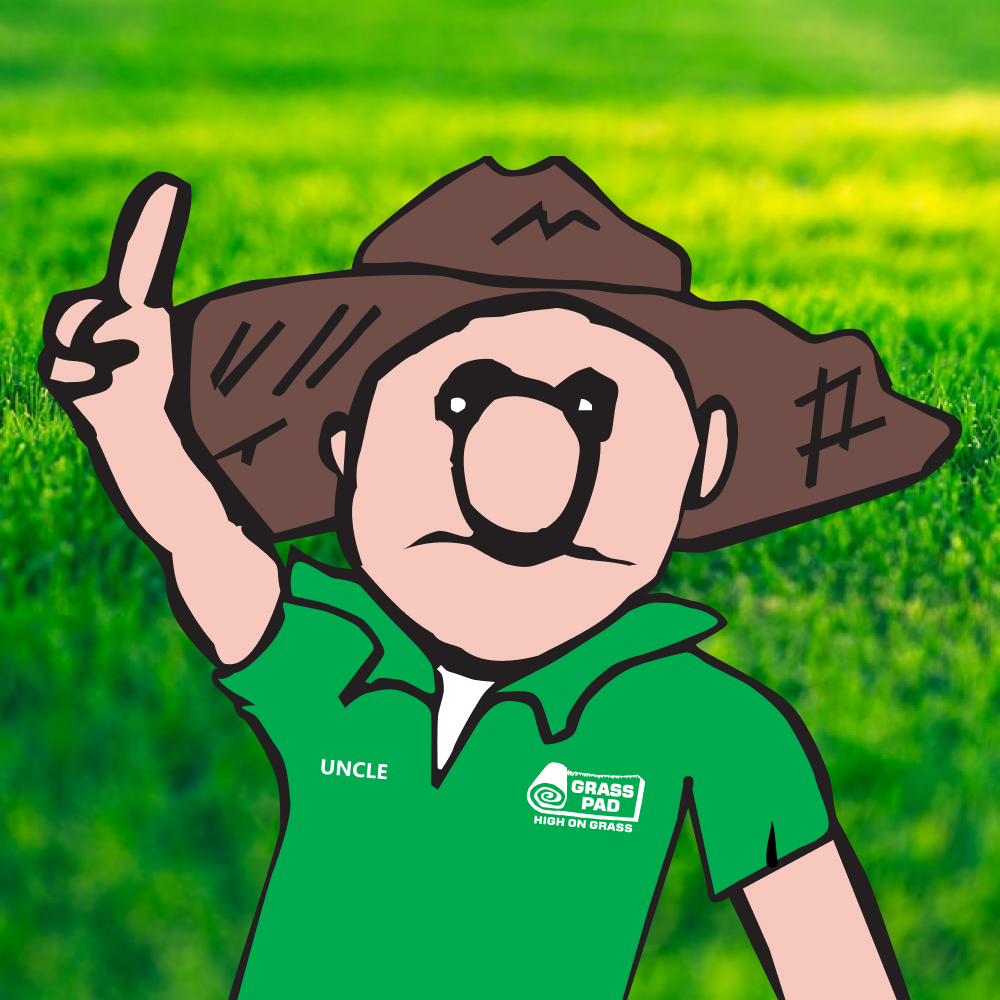After applying Renovator® in February or March, wait about three weeks before applying Seed Safe. That timing allows Renovator® to feed your existing turf and support early root development. Mid-April is the sweet spot, just as soil temps rise and crabgrass starts to stir.
Spring Seeding
SEED SAFE LAWN PROGRAM
5 Steps to lawn glory.
Spring Forward Without Falling Back Later
Seeding in the spring but need a year-long lawn care program? The Seed Safe Lawn Care Program is for you! All five steps are designed to seed in the spring, fight weeds and feed the lawn.
Every great lawn has a starting point, and for most of us, it’s not perfect. Even the best lawns need a reset. Maybe yours feels patchy, faded, or just tired. Spring is your chance to start strong, and Uncle’s five-step system makes it easy to rebuild your grass from the soil up.
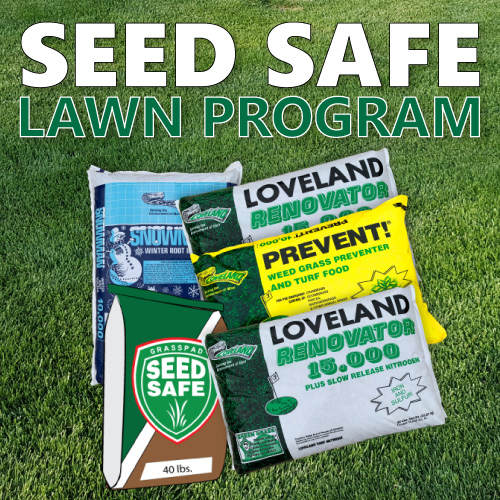
Idiot Proof Steps, Serious Results
Seed Safe Lawn Care Program Calendar
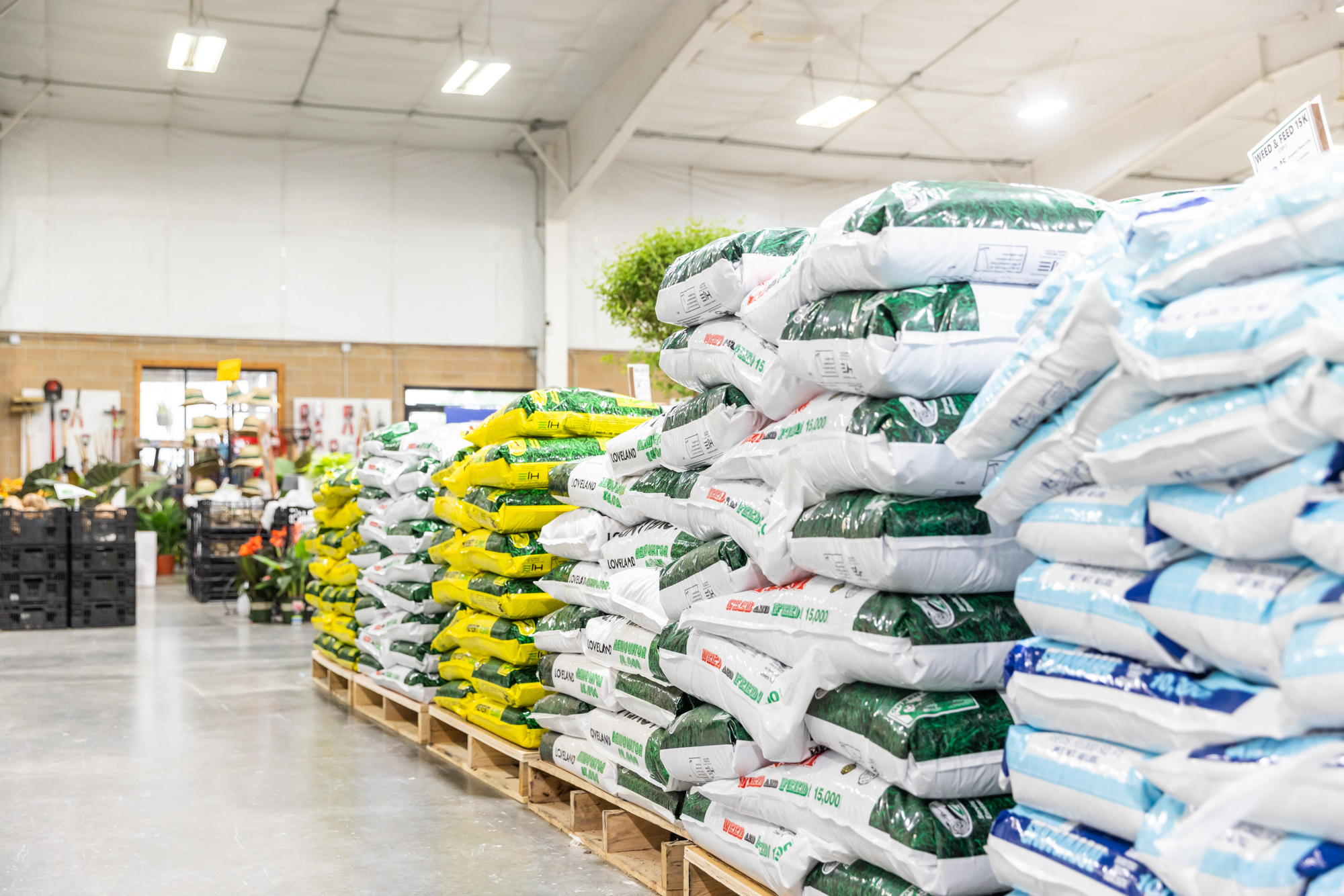
Step 1: Renovator®
Apply in: February – March
Apply Renovator!® in early to mid-March. This professional lawn food will feed the existing turf and provide food for new seed. Water in with at least 1/2″ of water. For smaller lawns, use Golf Course Starter. If spring seeding, apply grass seed the same day.

Step 2: Seed Safe®
Apply in: Mid-April
Apply Seed Safe® in mid-April. This crabgrass pre-emergent and lawn food will stop crabgrass from sprouting while letting your good grass grow. Water in with at least 1/2″ of water.
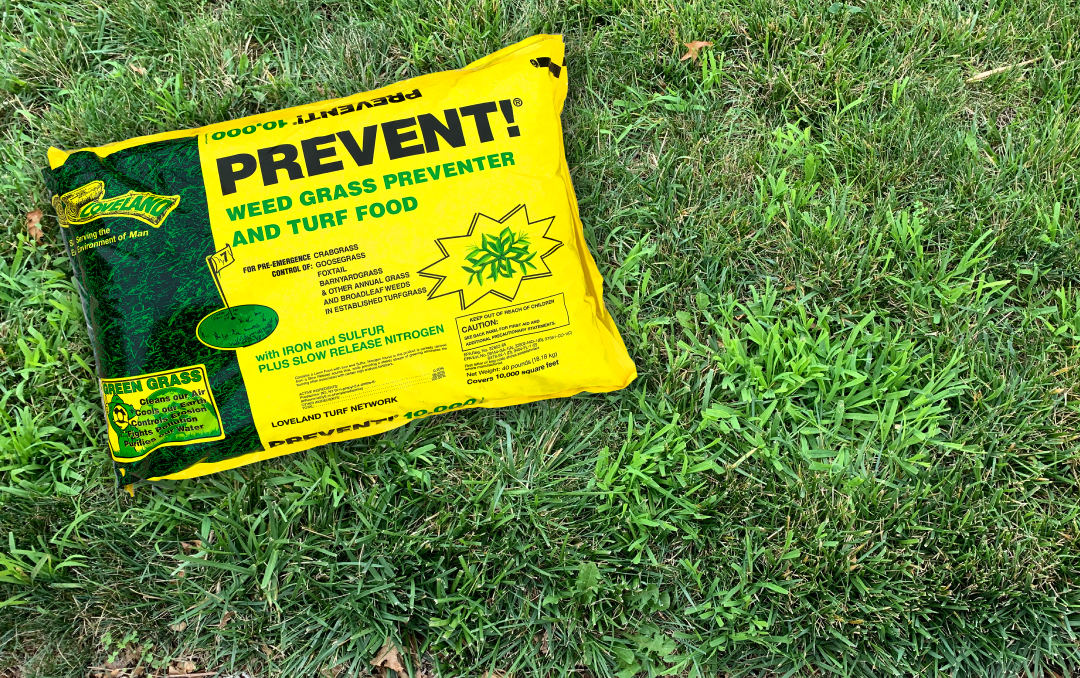
Step 3: Prevent!®
Apply in: May – June
Apply Loveland Prevent!® in mid-May to early June to prevent crabgrass during the hot summer months. Make sure all new grass seed planted in the spring has germinated and has been mowed 2-3 times before applying. Water in with at least 1/2″ of water.
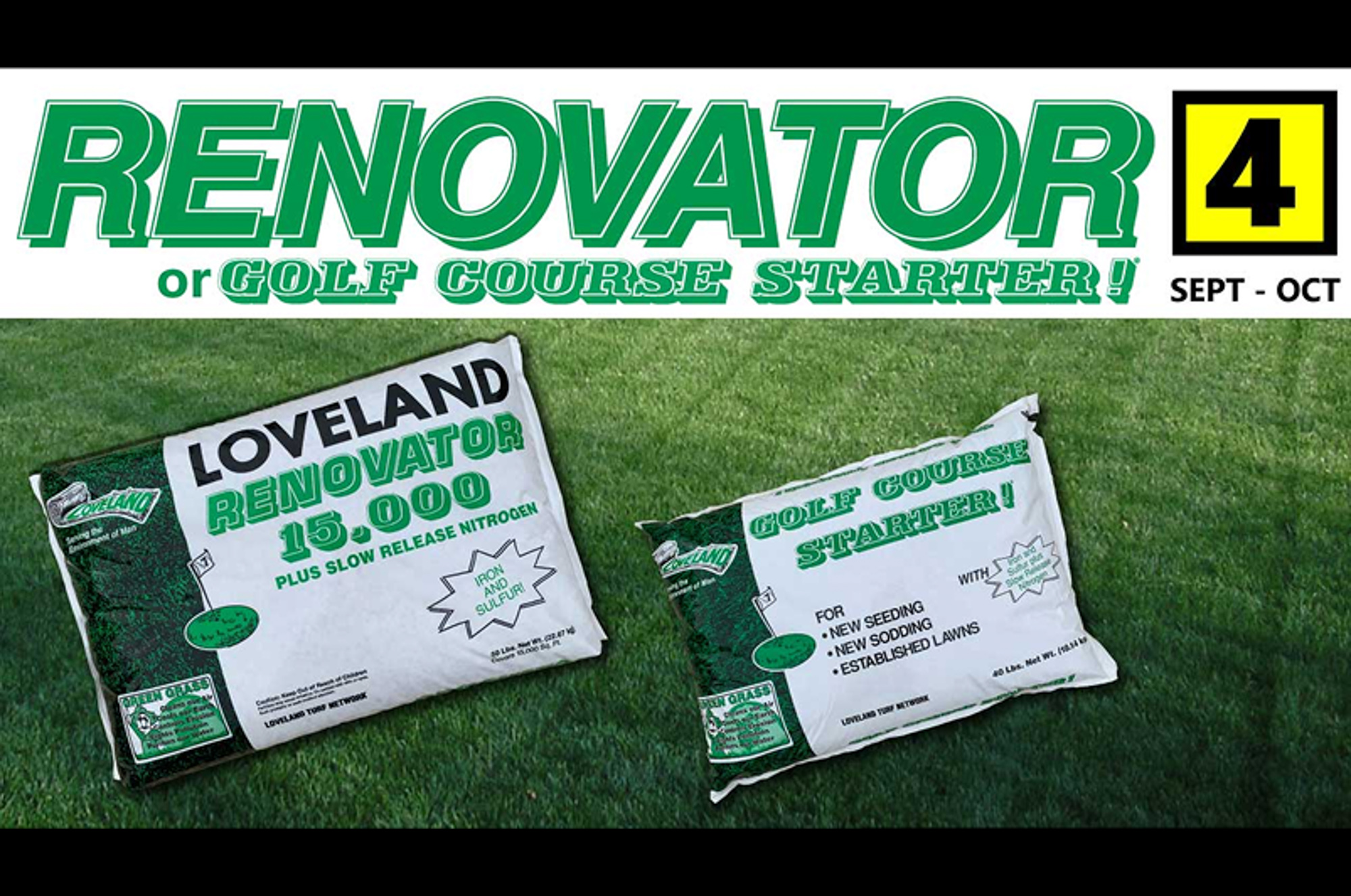
Step 4: Renovator®
Apply in: September – October
Apply Loveland Renovator!®, in early September through October. Put down at the same time as your fall overseeding. Renovator helps turf recover from summer stress and feeds the new seed. Water in with at least 1/2″ of water. For smaller lawns, use Golf Course Starter.
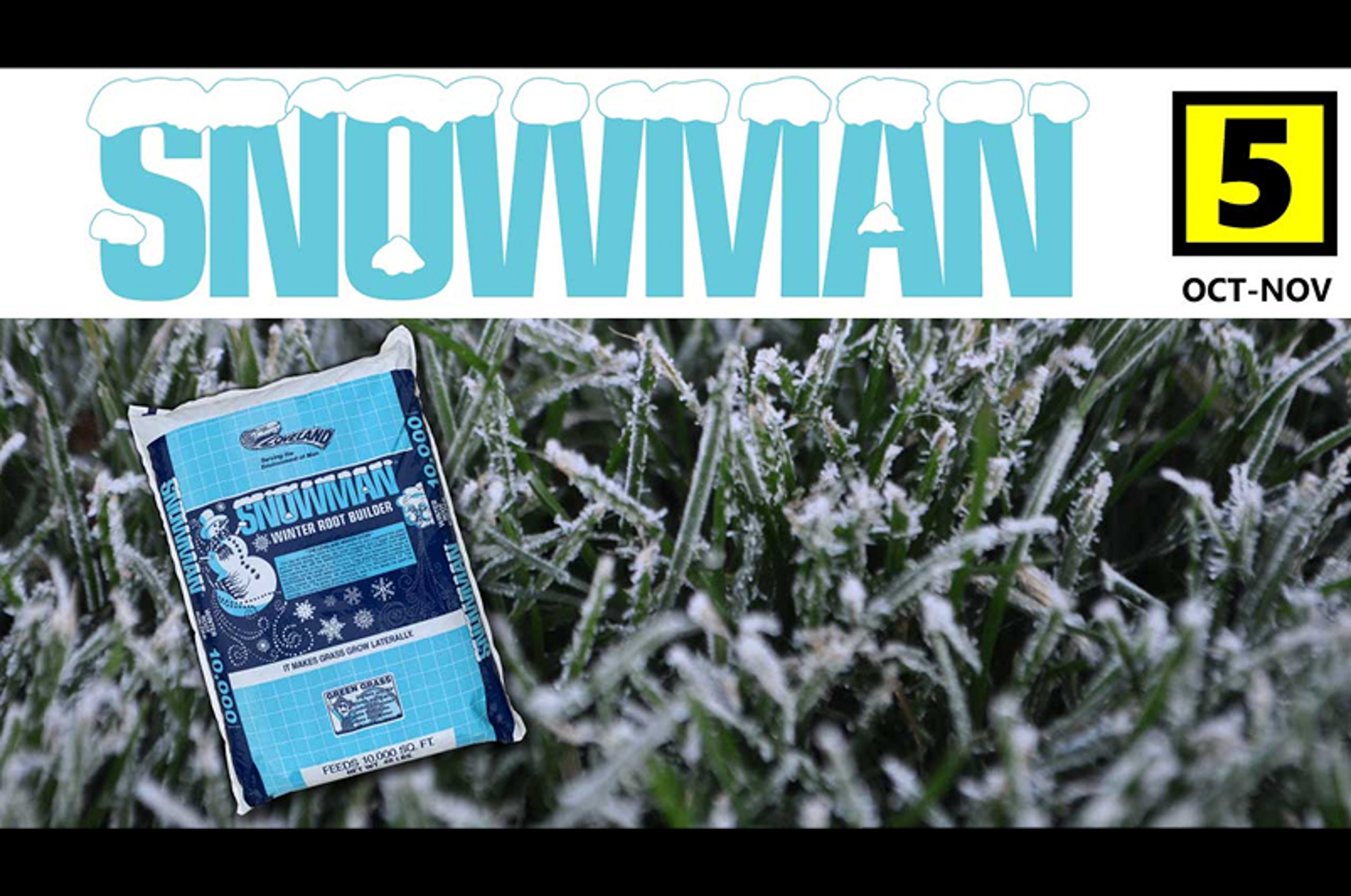
Step 5: Snowman®
Apply in: October – November
Apply Snowman Winter Root Builder around Thanksgiving. This high phosphorus and potash formula encourages root growth, disease resistance, drought and traffic tolerance as well as early spring green up.
Frequently Asked Questions
If mid-April has come and gone, you’ve still got options. You can still apply Seed Safe® later in April, but be realistic—its pre-emergent power diminishes as soil warms.
Yes. Water all steps of the Seed Safe Lawn Program with ½” of water within 24 to 48 hours of application. This activates the nutrients and helps them reach the root zone where they can actually do their job.
Cutting the grass short (but not scalping it) helps the product reach the soil surface where it does its job best. It also gives new seed more sunlight and space to grow without competing with long blades.
A light or moderate rain is actually a good thing because that’s Mother Nature helping activate the fertilizer, which can increase absorption into the soil. If there’s a heavy downpour, some surface product may shift, but the nutrients will still soak in where needed. Just check for puddling or runoff, and reapply lightly in any bare patches if needed.

Let Our Green Team Help!
For Lawns Full of Life & Laughter
Make room for backyard games, family fun, and paws-on-the-ground memories—all starting with great grass as the foundation.


-
-
DIY
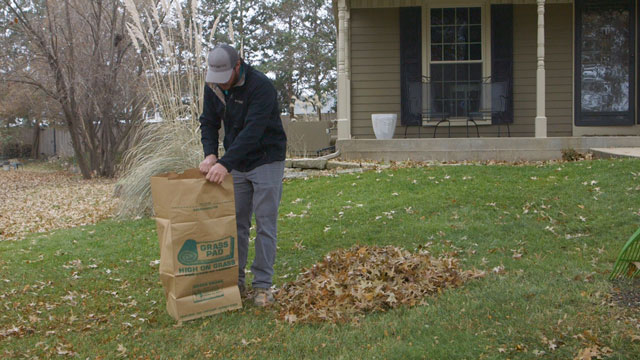
Early Spring Lawn Care Tips from the Grass Pad
-
-
Disease
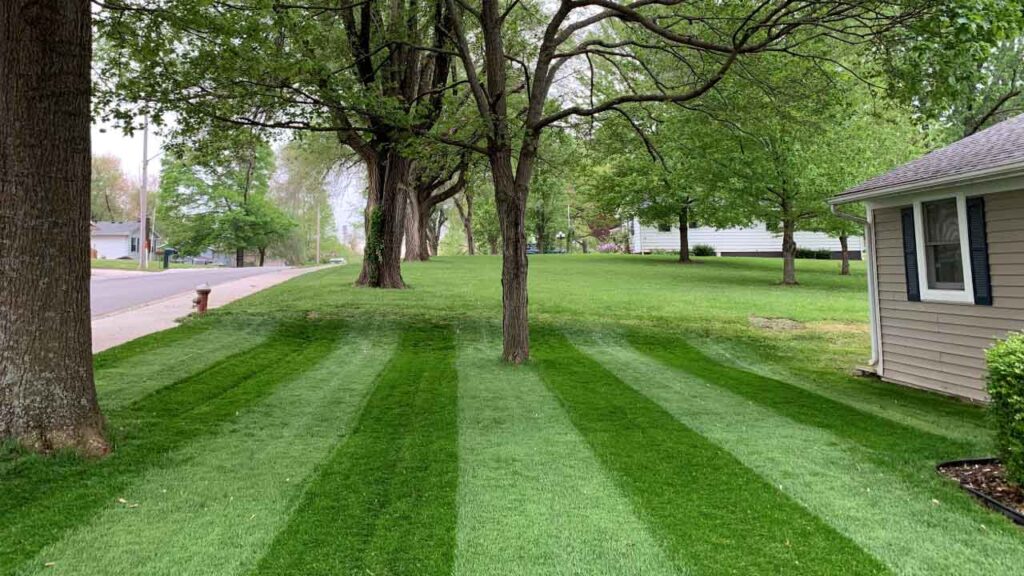
5 Tips to Keep Grass Growing Under Trees
-
-
Lawns so Good, We Had to Show Them Off
-
I began two years ago after moving in. Went ahead and dethatched, aerated, over seeded with Grass Pad blends, and covered in peat moss. I took great care with water and diligence until it was time to cut back and begin mowing more.
- Gage B. (Kansas City, MO)
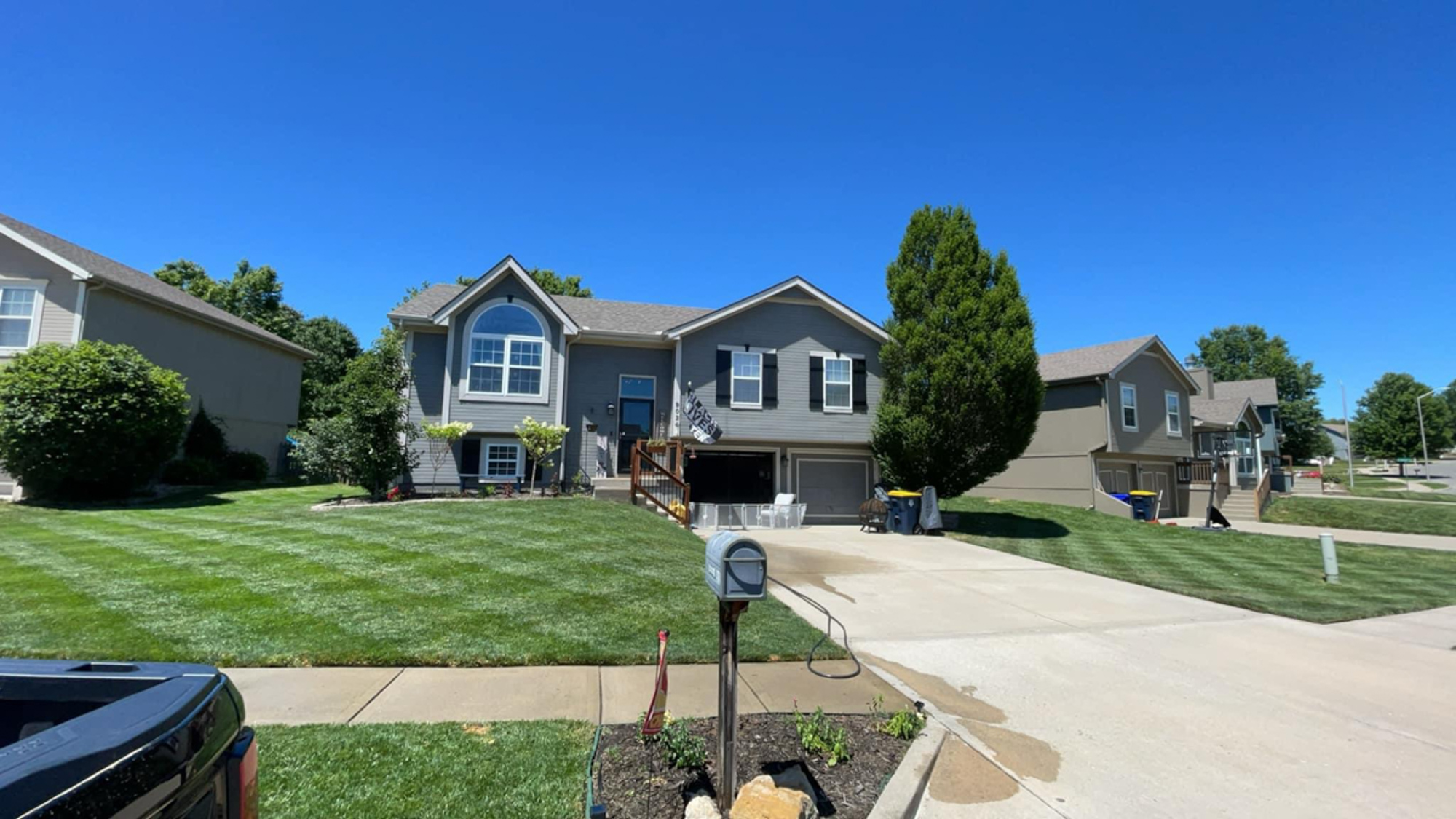


 I began two years ago after moving in. Went ahead and dethatched, aerated, over seeded with Grass Pad blends, and covered in peat moss. I took great care with water and diligence until it was time to cut back and begin mowing more.
I began two years ago after moving in. Went ahead and dethatched, aerated, over seeded with Grass Pad blends, and covered in peat moss. I took great care with water and diligence until it was time to cut back and begin mowing more.Gage B. (Kansas City, MO)
-
Used the Renovator on my Bluegrass and it’s looking great! Over seeding with BlueWave in the fall!
- Bobby B. (Bennington, NE)

 Used the Renovator on my Bluegrass and it’s looking great! Over seeding with BlueWave in the fall!
Used the Renovator on my Bluegrass and it’s looking great! Over seeding with BlueWave in the fall!Bobby B. (Bennington, NE)
-
I’ve been using Grass Pad’s Idiot-Proof Program ever since I bought my home. Couldn’t be happier with the results and recommend Grass Pad to anyone who will listen!
- Tyler K. (Louisburg, KS)



 I’ve been using Grass Pad’s Idiot-Proof Program ever since I bought my home. Couldn’t be happier with the results and recommend Grass Pad to anyone who will listen!
I’ve been using Grass Pad’s Idiot-Proof Program ever since I bought my home. Couldn’t be happier with the results and recommend Grass Pad to anyone who will listen!Tyler K. (Louisburg, KS)
-
My lawn looks great because of 2 things: The Idiot Proof Program from The Grass Pad, and the fine people of Milwaukee.
- Cameron S. (Olathe, KS)



 My lawn looks great because of 2 things: The Idiot Proof Program from The Grass Pad, and the fine people of Milwaukee.
My lawn looks great because of 2 things: The Idiot Proof Program from The Grass Pad, and the fine people of Milwaukee.Cameron S. (Olathe, KS)
-
I’ve been using Grass Pad’s Idiot-Proof Program ever since we bought our new home.
- Jose C. (Independence, MO)
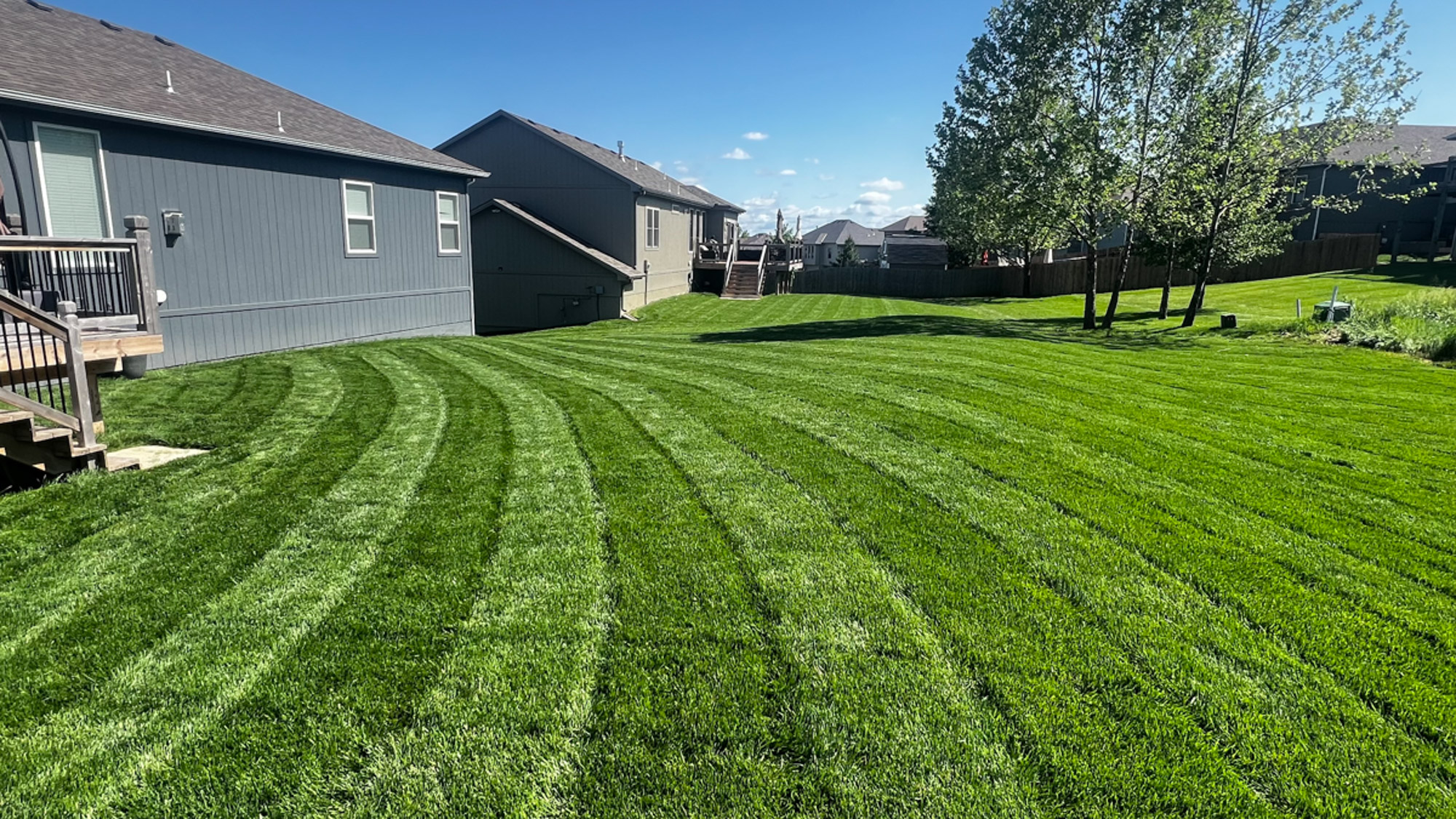


 I’ve been using Grass Pad’s Idiot-Proof Program ever since we bought our new home.
I’ve been using Grass Pad’s Idiot-Proof Program ever since we bought our new home.Jose C. (Independence, MO)
-
I’ve been using Grass Pad’s Idiot-Proof Program ever since we bought our new home. Dethatched last year and overseeded with HeatWave Plus. Lawn is looking better than ever!
- Jake K. (Olathe, KS)
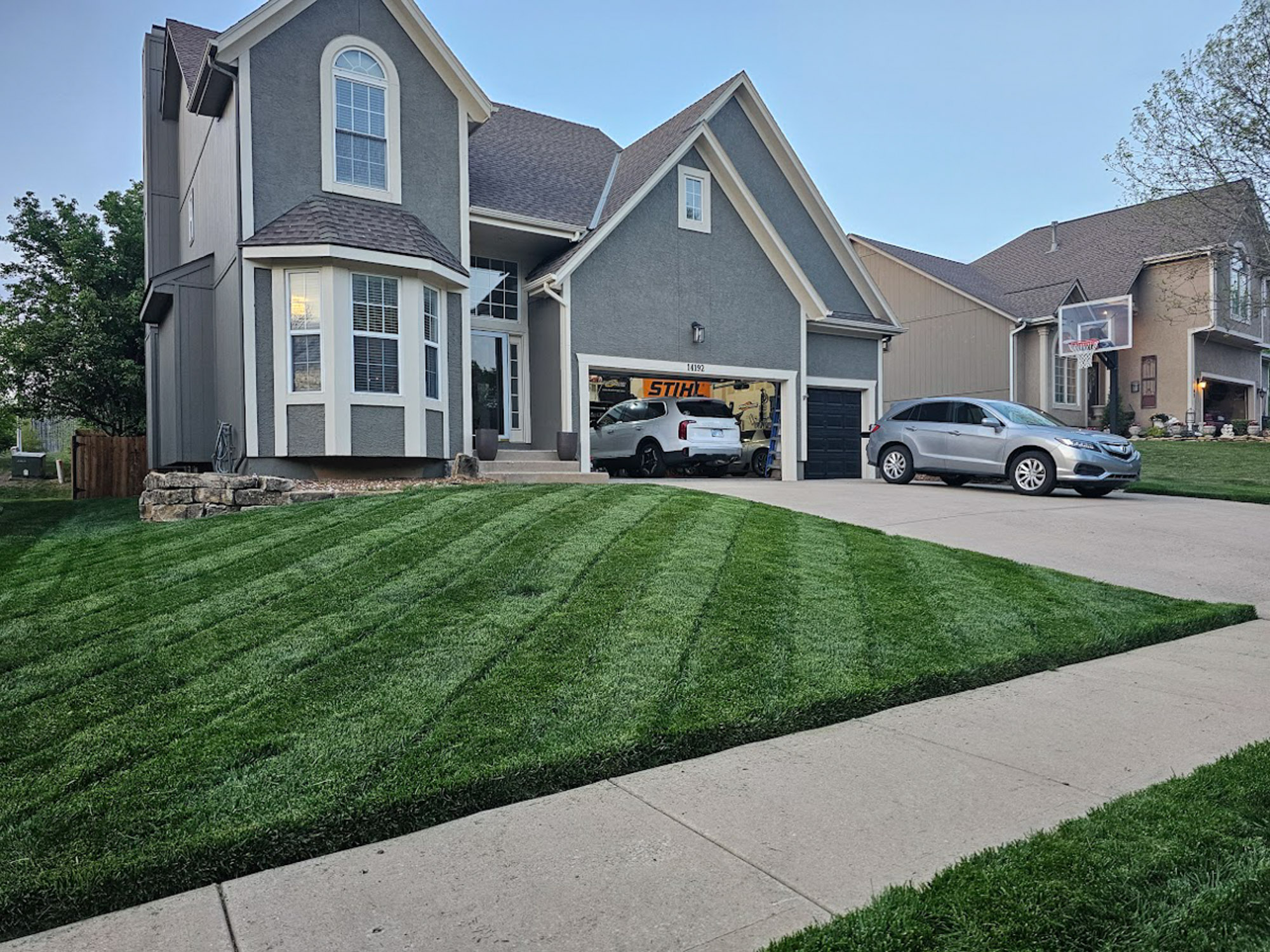


 I’ve been using Grass Pad’s Idiot-Proof Program ever since we bought our new home. Dethatched last year and overseeded with HeatWave Plus. Lawn is looking better than ever!
I’ve been using Grass Pad’s Idiot-Proof Program ever since we bought our new home. Dethatched last year and overseeded with HeatWave Plus. Lawn is looking better than ever!Jake K. (Olathe, KS)
-
I’ve used nothing but Grass Pad products and advice from my buddy Richard since moving into our new home. Our neighborhood has an annual 4th of July parade and I’ve received multiple compliments. It’s now a goal to always look great on the 4th. It’s looking great this year.
- Ryan H. (Lee’s Summit, MO)
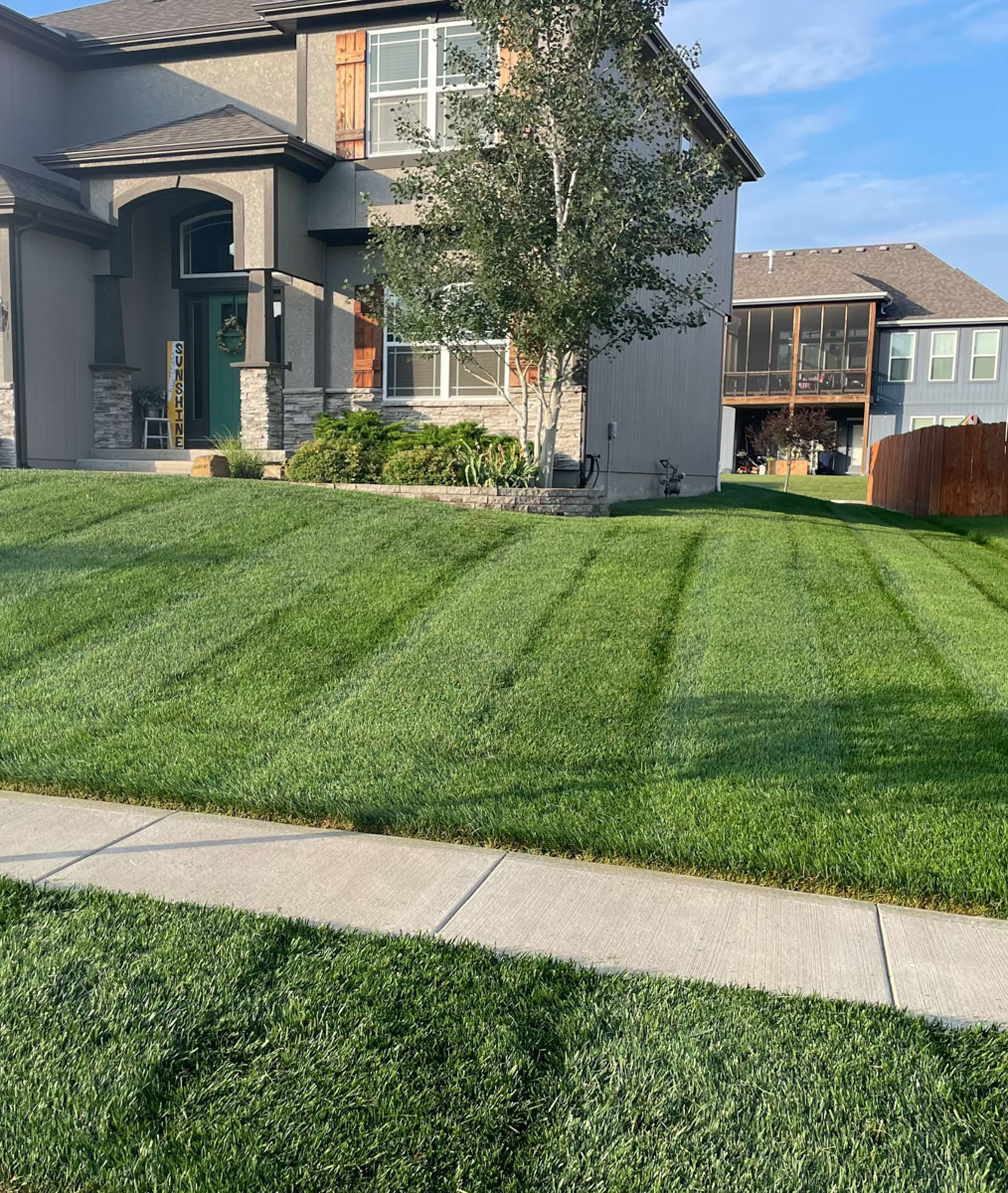


 I’ve used nothing but Grass Pad products and advice from my buddy Richard since moving into our new home. Our neighborhood has an annual 4th of July parade and I’ve received multiple compliments. It’s now a goal to always look great on the 4th. It’s looking great this year.
I’ve used nothing but Grass Pad products and advice from my buddy Richard since moving into our new home. Our neighborhood has an annual 4th of July parade and I’ve received multiple compliments. It’s now a goal to always look great on the 4th. It’s looking great this year.Ryan H. (Lee’s Summit, MO)
-
We moved into our home in ’22 and inherited just an absolute disaster of a yard; everything but grass was present. Fall of ’22, I got fed up and killed it all. Did a spring seeding of Macho Mix and Renovator and just watched the beauty happen right before my eyes. Overseeded with Macho again…
- Nate V. (Independence, MO)
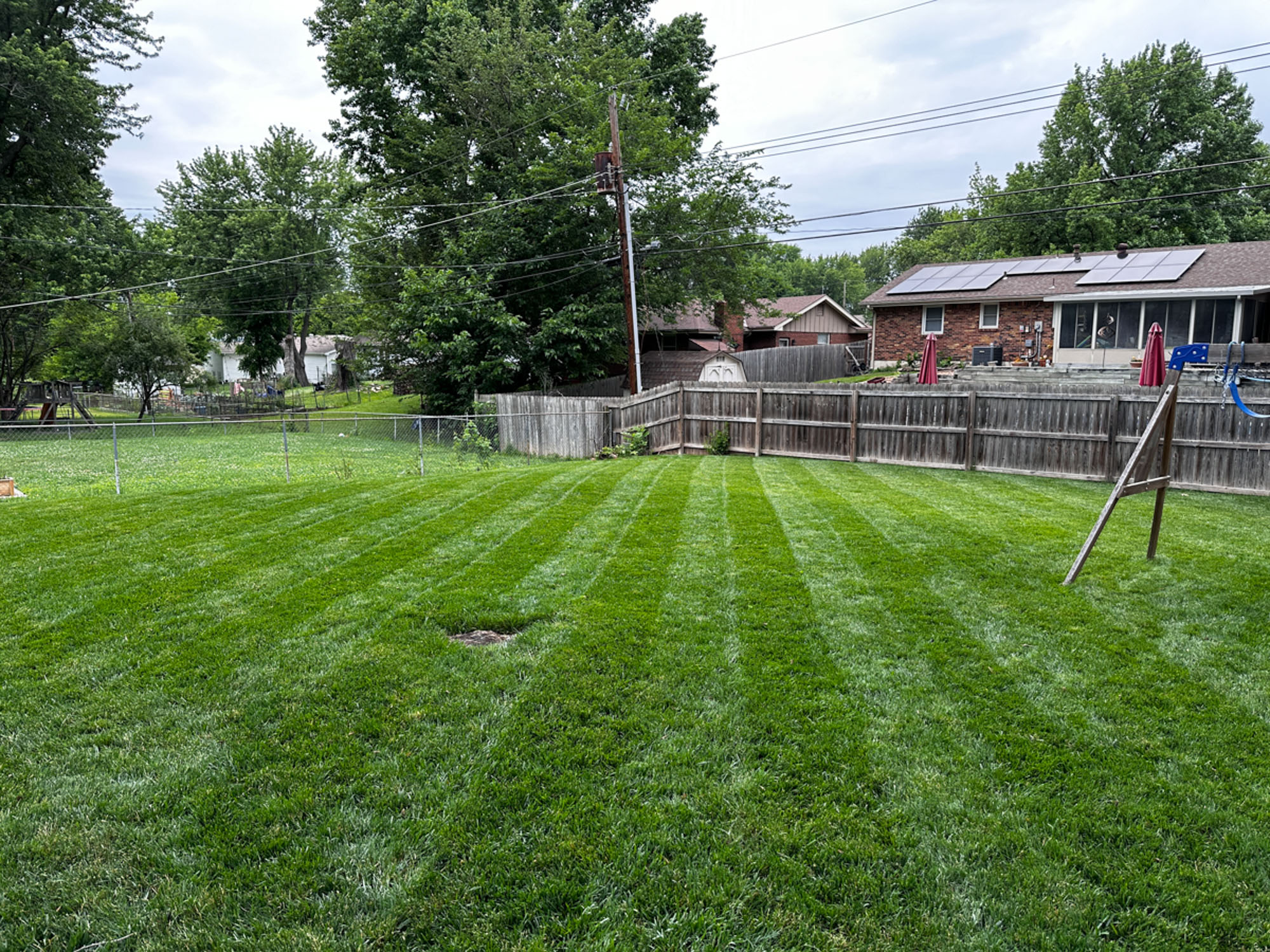


 We moved into our home in ’22 and inherited just an absolute disaster of a yard; everything but grass was present. Fall of ’22, I got fed up and killed it all. Did a spring seeding of Macho Mix and Renovator and just watched the beauty happen right before my eyes. Overseeded with Macho again in the fall. Snowman kept it healthy and strong through its first winter. Now we are a year in and people slow down to look at it. Stripes beautifully, and is the envy of the neighborhood. This fall, I’ll be working on neighbors’ and family members’ lawns using Grass Pad’s array of offerings and watching them enjoy their lawns for the first time!
We moved into our home in ’22 and inherited just an absolute disaster of a yard; everything but grass was present. Fall of ’22, I got fed up and killed it all. Did a spring seeding of Macho Mix and Renovator and just watched the beauty happen right before my eyes. Overseeded with Macho again in the fall. Snowman kept it healthy and strong through its first winter. Now we are a year in and people slow down to look at it. Stripes beautifully, and is the envy of the neighborhood. This fall, I’ll be working on neighbors’ and family members’ lawns using Grass Pad’s array of offerings and watching them enjoy their lawns for the first time!Nate V. (Independence, MO)
-
Full kill off reno with Grass Pad Macho Mix in 2017 as first year homeowner. Only used Grass Pad seed or sod on the lawn. Idiot Proof Lawn Program every year, plus plenty of other stuff. Looked good even mowing in January this year! It’s been the best lawn on the block for at least…
- Matt W. (Olathe, KS)
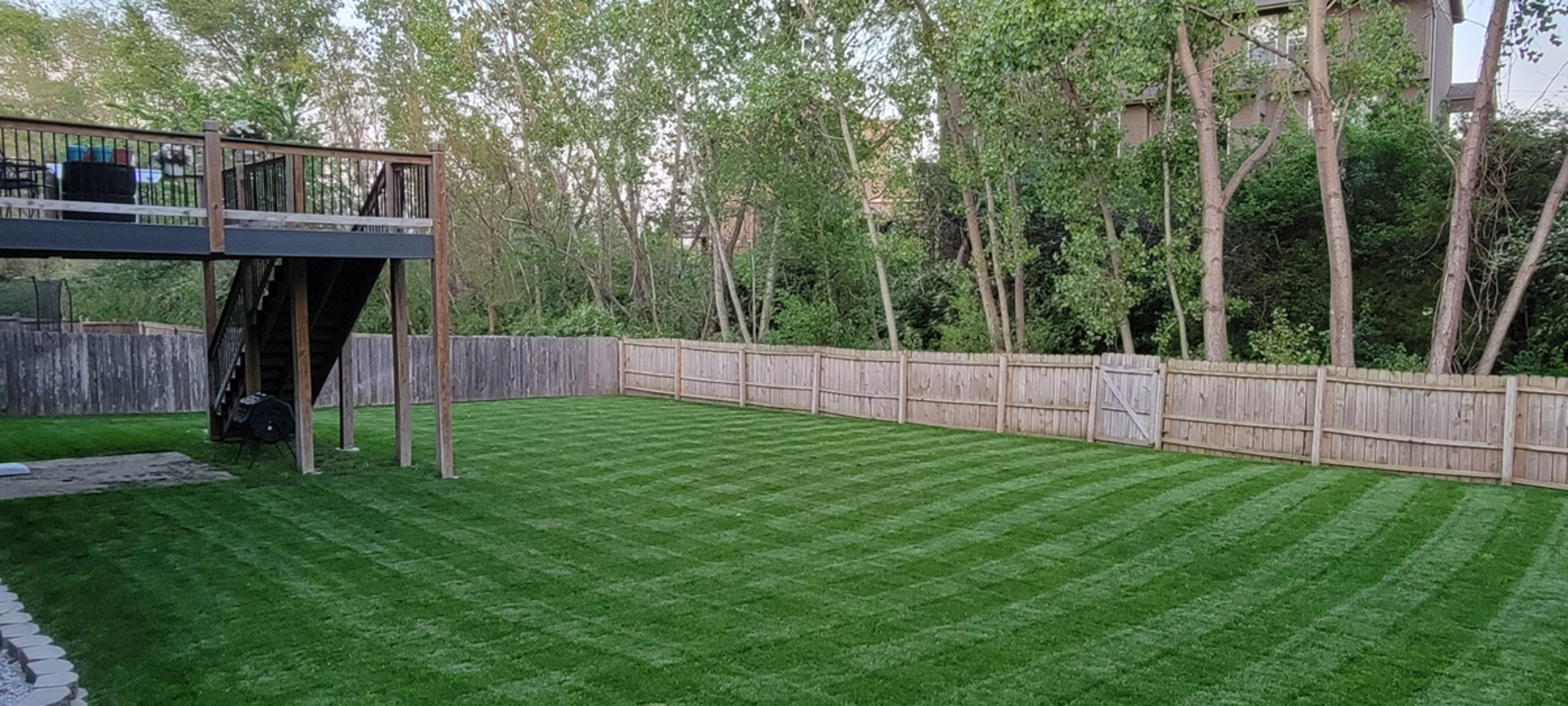


 Full kill off reno with Grass Pad Macho Mix in 2017 as first year homeowner. Only used Grass Pad seed or sod on the lawn. Idiot Proof Lawn Program every year, plus plenty of other stuff. Looked good even mowing in January this year! It’s been the best lawn on the block for at least 5 years running now.
Full kill off reno with Grass Pad Macho Mix in 2017 as first year homeowner. Only used Grass Pad seed or sod on the lawn. Idiot Proof Lawn Program every year, plus plenty of other stuff. Looked good even mowing in January this year! It’s been the best lawn on the block for at least 5 years running now.Matt W. (Olathe, KS)
-
Grass Pad’s knowledge, process and products have helped take our lawn from average to great! It’s a treat to pull up to our house and see our lawn!
- Nathan J. (Leawood, KS)



 Grass Pad’s knowledge, process and products have helped take our lawn from average to great! It’s a treat to pull up to our house and see our lawn!
Grass Pad’s knowledge, process and products have helped take our lawn from average to great! It’s a treat to pull up to our house and see our lawn!Nathan J. (Leawood, KS)
-
After struggling for two years to establish a decent lawn with overseeding with box-store products, we finally made the decision to completely renovate our lawn last Fall. We used Grass Pad’s Macho Mix and could not be happier with the results. During the renovation we had lots of neighbors stop by and ask, “What are…
- Matt H. (Muscatine, IA)

 After struggling for two years to establish a decent lawn with overseeding with box-store products, we finally made the decision to completely renovate our lawn last Fall. We used Grass Pad’s Macho Mix and could not be happier with the results. During the renovation we had lots of neighbors stop by and ask, “What are you doing?!” Now when we’re mowing, we constantly have neighbors stopping to ask, “Tell me what you did!” We recommend Grass Pad’s products to everyone.
After struggling for two years to establish a decent lawn with overseeding with box-store products, we finally made the decision to completely renovate our lawn last Fall. We used Grass Pad’s Macho Mix and could not be happier with the results. During the renovation we had lots of neighbors stop by and ask, “What are you doing?!” Now when we’re mowing, we constantly have neighbors stopping to ask, “Tell me what you did!” We recommend Grass Pad’s products to everyone.Matt H. (Muscatine, IA)
-
1 year old sod, fixed with Grass Pad products. Yard is thick, weed free, and Green!
- Cody C. (Omaha, NE)
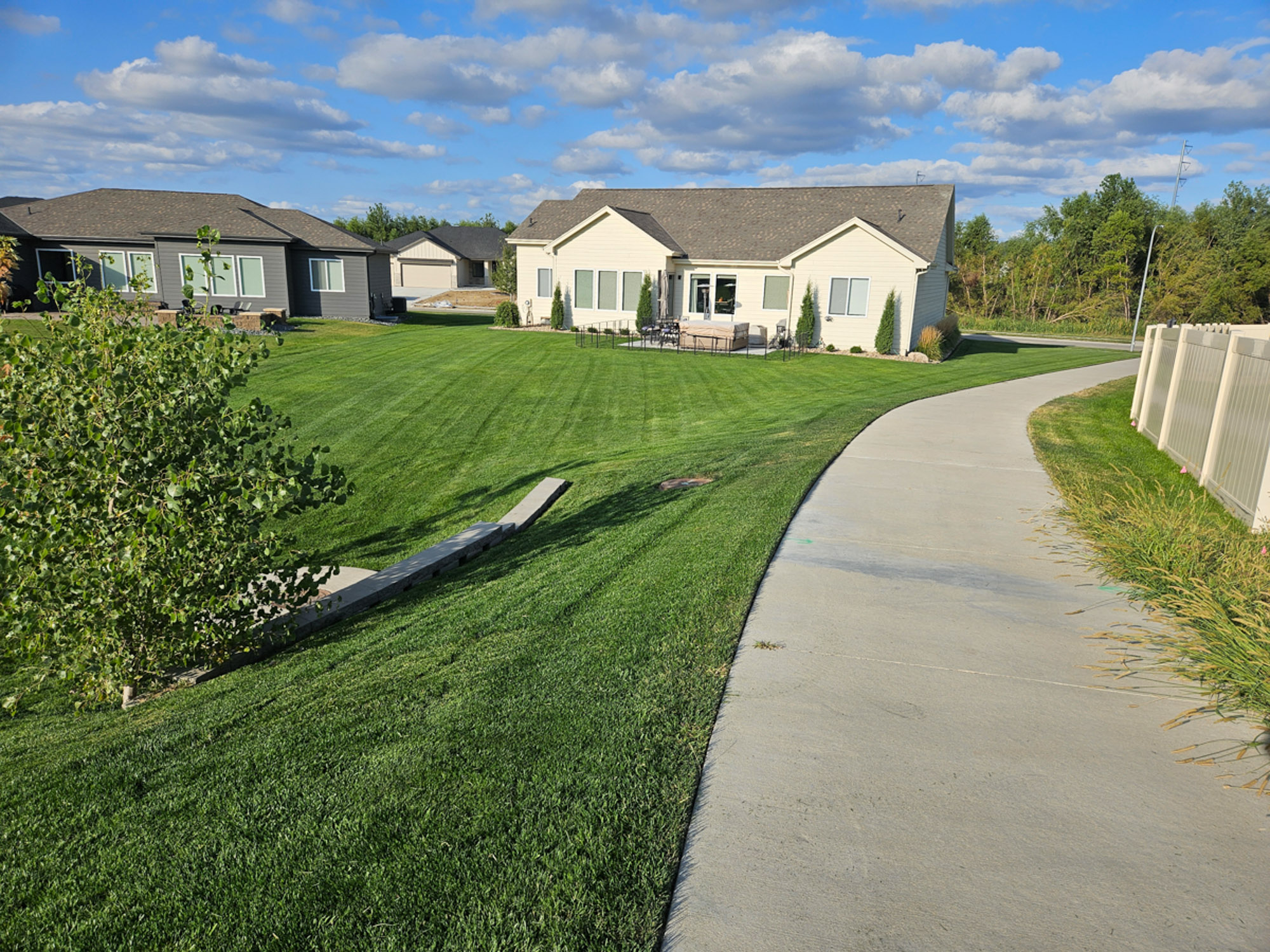


 1 year old sod, fixed with Grass Pad products. Yard is thick, weed free, and Green!
1 year old sod, fixed with Grass Pad products. Yard is thick, weed free, and Green!Cody C. (Omaha, NE)
-
It keeps getting better and better with Grass Pad’s Idiot Proof system! After thinking last year’s Hall of Fame yard was the best it was going to get, we’re looking even better in 2024! Macho Mix + the complete program for these incredible results.
- Chris M. (Kansas City, MO)

 It keeps getting better and better with Grass Pad’s Idiot Proof system! After thinking last year’s Hall of Fame yard was the best it was going to get, we’re looking even better in 2024! Macho Mix + the complete program for these incredible results.
It keeps getting better and better with Grass Pad’s Idiot Proof system! After thinking last year’s Hall of Fame yard was the best it was going to get, we’re looking even better in 2024! Macho Mix + the complete program for these incredible results.Chris M. (Kansas City, MO)
-
I have been a Loyal Grass Pad customer for decades. I use their products on my primary home and all of our rental properties for outstanding turf management. The Idiot Proof Lawn Program works and the advice they give on the height of cut is priceless. Too bad more people don’t heed their proven advice.
- Kevin & Connie O. (Olathe, KS)



 I have been a Loyal Grass Pad customer for decades. I use their products on my primary home and all of our rental properties for outstanding turf management. The Idiot Proof Lawn Program works and the advice they give on the height of cut is priceless. Too bad more people don’t heed their proven advice.
I have been a Loyal Grass Pad customer for decades. I use their products on my primary home and all of our rental properties for outstanding turf management. The Idiot Proof Lawn Program works and the advice they give on the height of cut is priceless. Too bad more people don’t heed their proven advice.Kevin & Connie O. (Olathe, KS)
-
The results speak for themselves! Follow their process and you are guaranteed results. It’s simple, effective, affordable and by following their system it takes all the guess work out of it! If you want the best lawn in the neighborhood look no further!
- Grant A. (Platte City, MO)
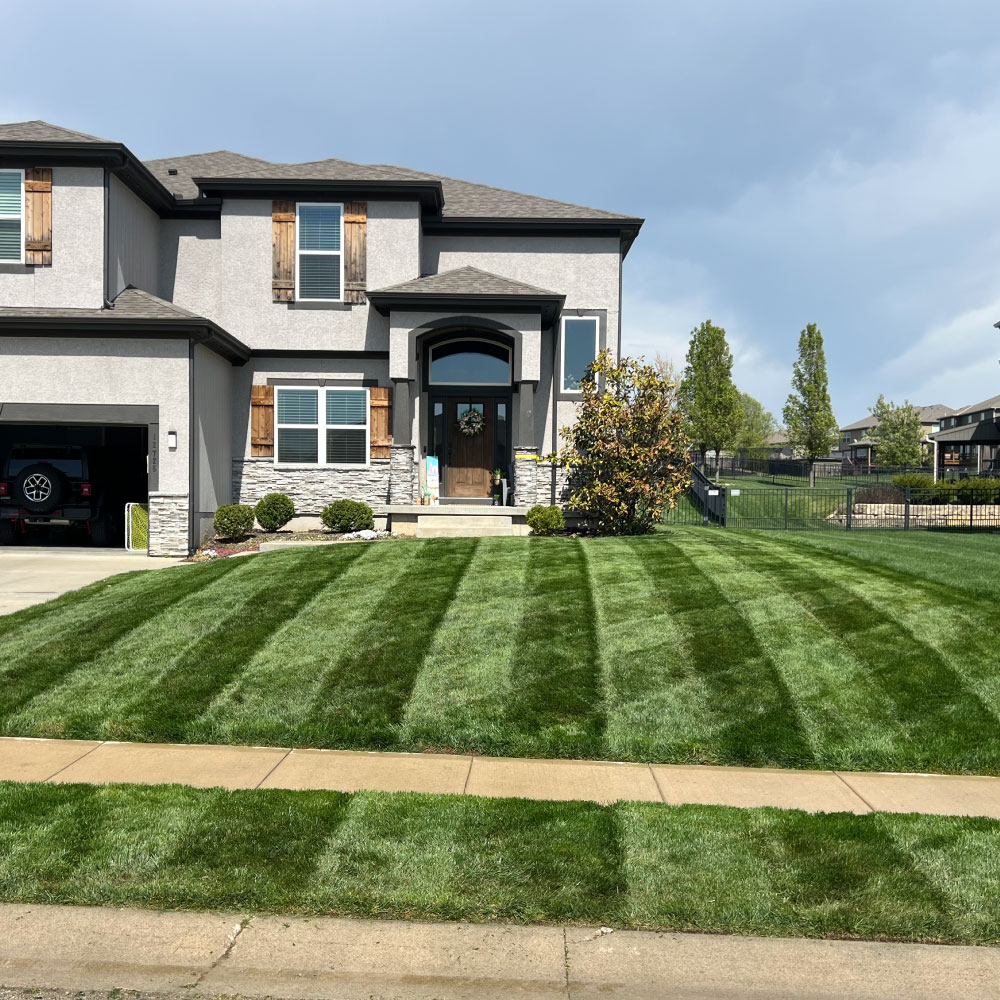


 The results speak for themselves! Follow their process and you are guaranteed results. It’s simple, effective, affordable and by following their system it takes all the guess work out of it! If you want the best lawn in the neighborhood look no further!
The results speak for themselves! Follow their process and you are guaranteed results. It’s simple, effective, affordable and by following their system it takes all the guess work out of it! If you want the best lawn in the neighborhood look no further!Grant A. (Platte City, MO)
-
“I have been using Grass Pad for the past 7-years. I have done the Idiot Proof Lawn Care Program and the overseed plan. Wouldn’t choose any other store than the Grass Pad!!!! I have convinced my neighbors to jump on the Grass Pad programs and they love it!!!!”
- Saul I. (Platte City, MO)
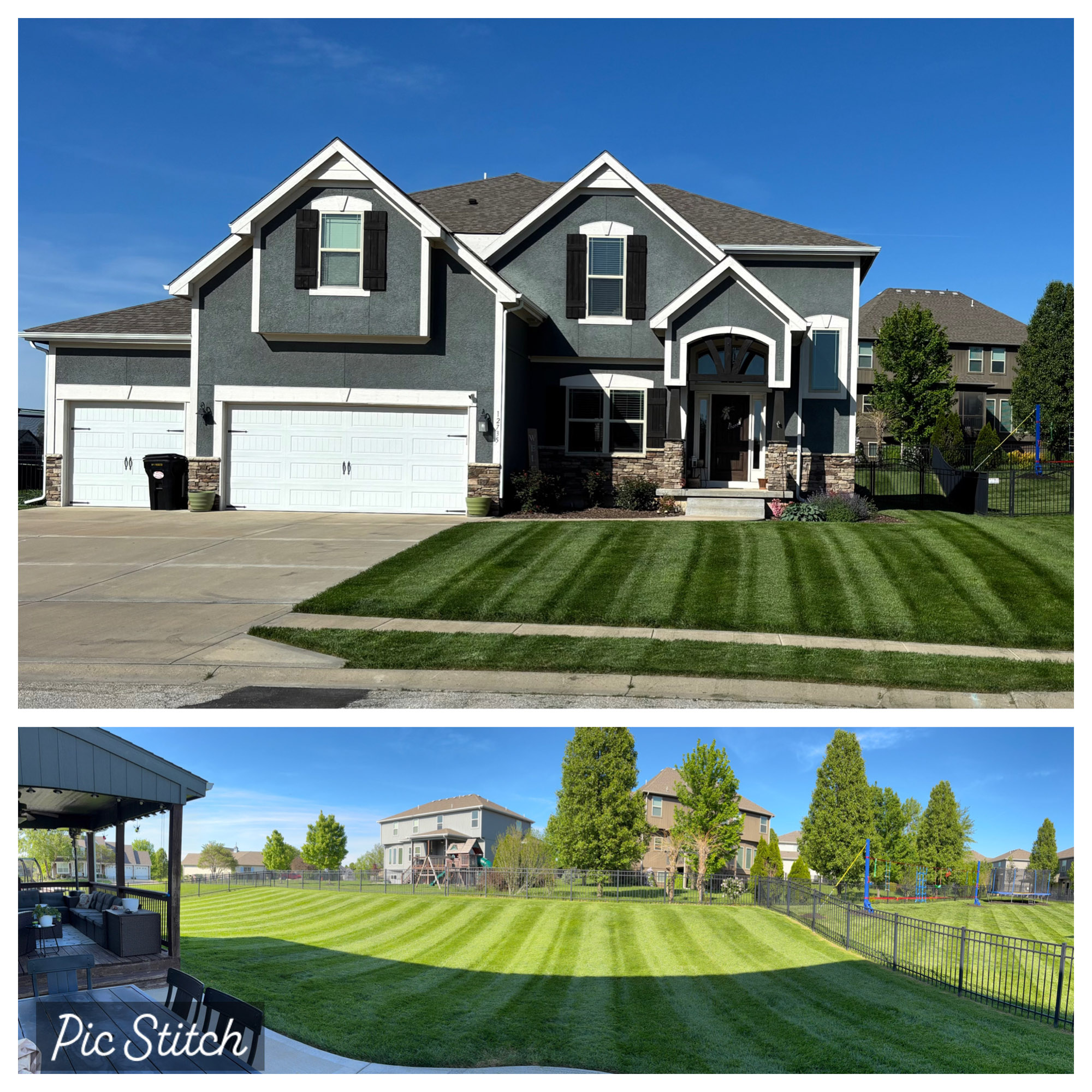


 “I have been using Grass Pad for the past 7-years. I have done the Idiot Proof Lawn Care Program and the overseed plan. Wouldn’t choose any other store than the Grass Pad!!!! I have convinced my neighbors to jump on the Grass Pad programs and they love it!!!!”
“I have been using Grass Pad for the past 7-years. I have done the Idiot Proof Lawn Care Program and the overseed plan. Wouldn’t choose any other store than the Grass Pad!!!! I have convinced my neighbors to jump on the Grass Pad programs and they love it!!!!”Saul I. (Platte City, MO)
-
“I have been religiously following the Idiot Proof Lawn Care Program since I bought this house five years ago. This will be the 5th season and my lawn is looking better than ever!”
- Scott T. (Lee’s Summit, MO)



 “I have been religiously following the Idiot Proof Lawn Care Program since I bought this house five years ago. This will be the 5th season and my lawn is looking better than ever!”
“I have been religiously following the Idiot Proof Lawn Care Program since I bought this house five years ago. This will be the 5th season and my lawn is looking better than ever!”Scott T. (Lee’s Summit, MO)
-
“I have been using the Idiot Proof Program for over twenty years. Check out my turf this morning, April 24, 2025. It is Heat Wave Plus seed after the fourth mow of the season and shortly after step 2 Weed and Feed was applied. I get comments about the good lawn from the neighborhood walking…
- Tom B. (Olathe, KS)
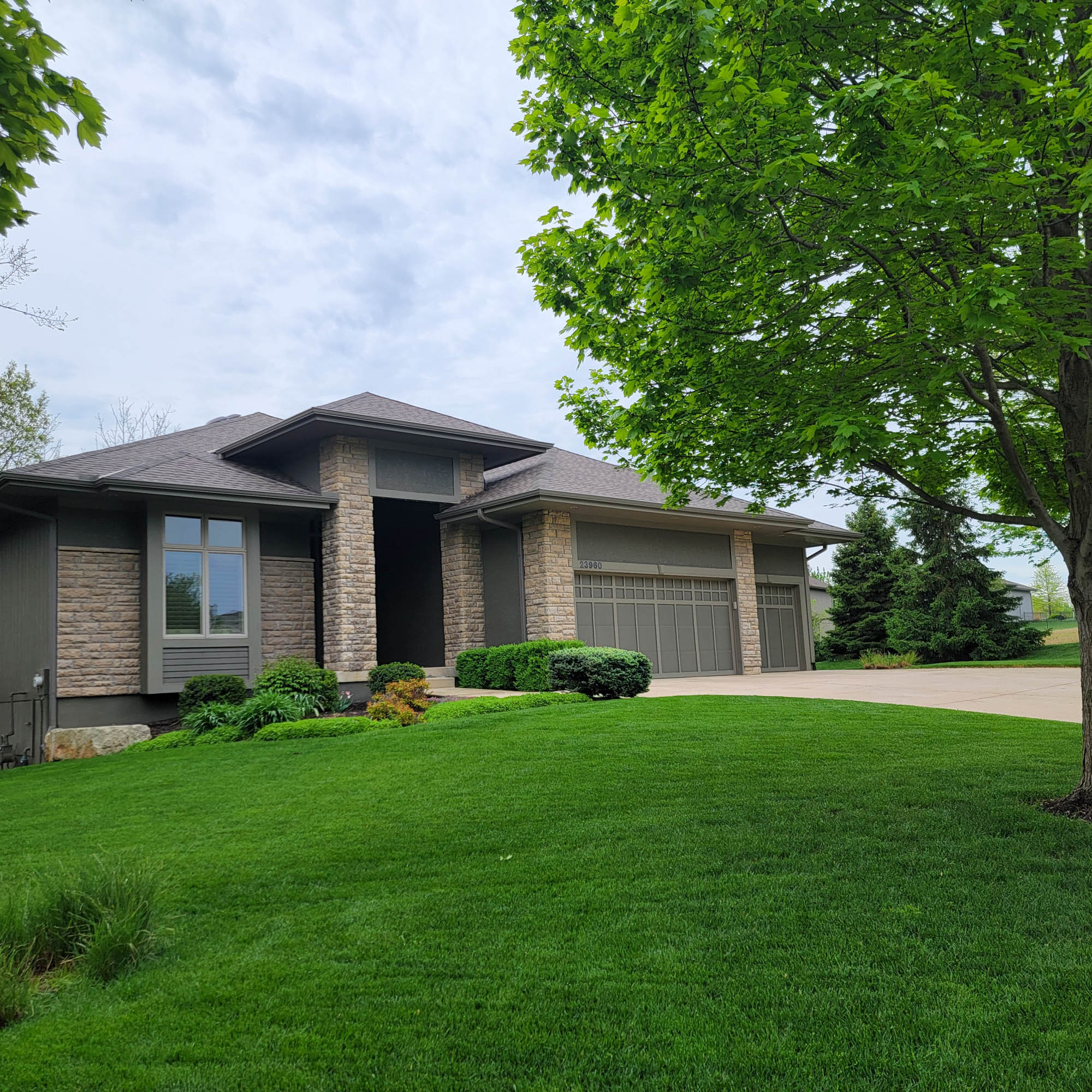


 “I have been using the Idiot Proof Program for over twenty years. Check out my turf this morning, April 24, 2025. It is Heat Wave Plus seed after the fourth mow of the season and shortly after step 2 Weed and Feed was applied. I get comments about the good lawn from the neighborhood walking traffic all the time.”
“I have been using the Idiot Proof Program for over twenty years. Check out my turf this morning, April 24, 2025. It is Heat Wave Plus seed after the fourth mow of the season and shortly after step 2 Weed and Feed was applied. I get comments about the good lawn from the neighborhood walking traffic all the time.”Tom B. (Olathe, KS)
-
“I bought my current house in December of 2021, the lawn was in pretty poor shape. With the great staff at the Bonner Springs Grass Pad it is one of the best in the neighborhood now. With the Idiot Proof Program every year and some other touches like Fungus Fighter, milorganite and overseeding with Heatwave…
- Zach S. (Shawnee, KS)
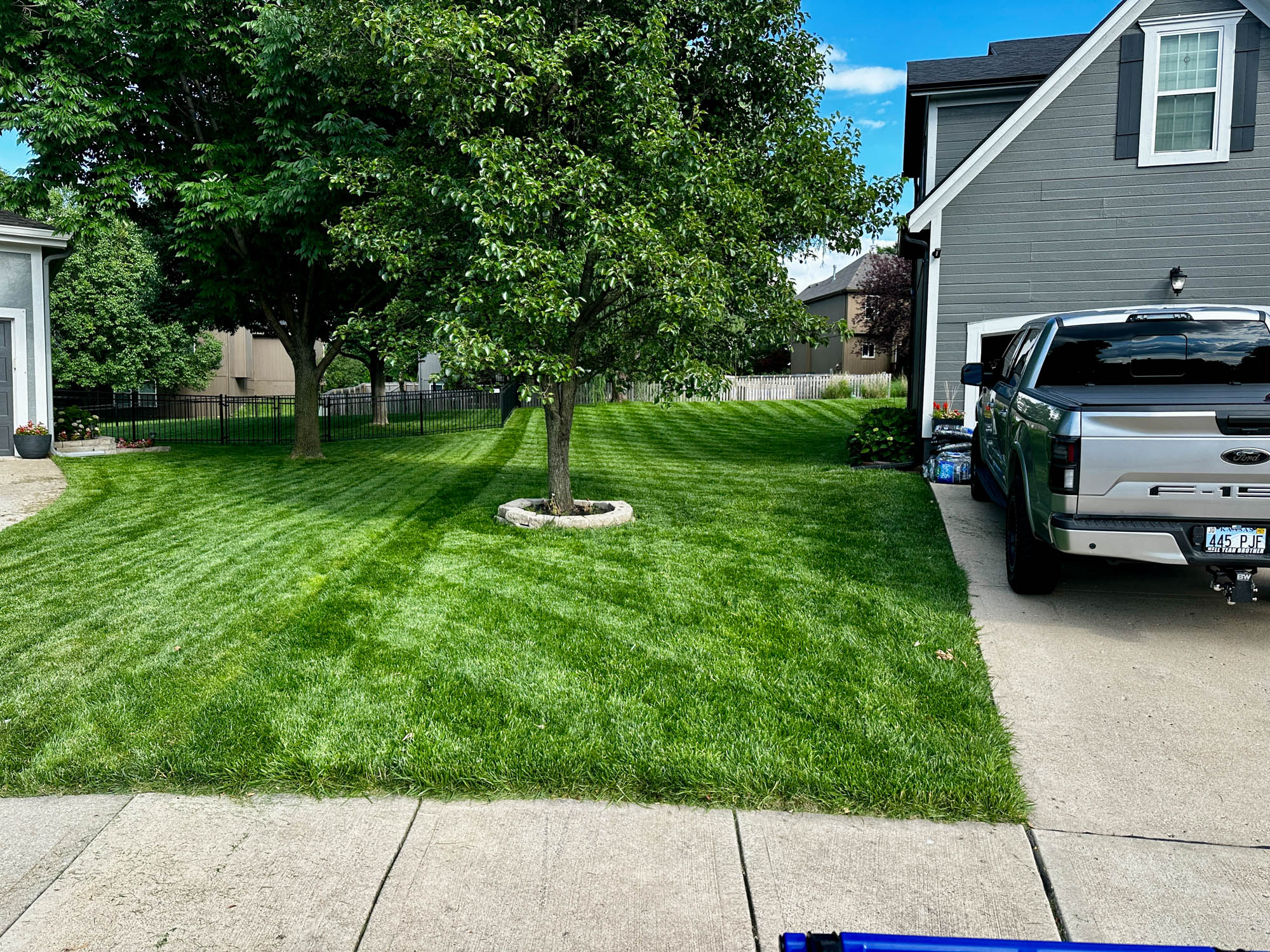


 “I bought my current house in December of 2021, the lawn was in pretty poor shape. With the great staff at the Bonner Springs Grass Pad it is one of the best in the neighborhood now. With the Idiot Proof Program every year and some other touches like Fungus Fighter, milorganite and overseeding with Heatwave Plus I couldn’t be happier. “
“I bought my current house in December of 2021, the lawn was in pretty poor shape. With the great staff at the Bonner Springs Grass Pad it is one of the best in the neighborhood now. With the Idiot Proof Program every year and some other touches like Fungus Fighter, milorganite and overseeding with Heatwave Plus I couldn’t be happier. “Zach S. (Shawnee, KS)
-
“Multi-year idiot-proof program user, 3rd year of Bluewave fall renovations.”
- Brian K. (Overland Park, KS)
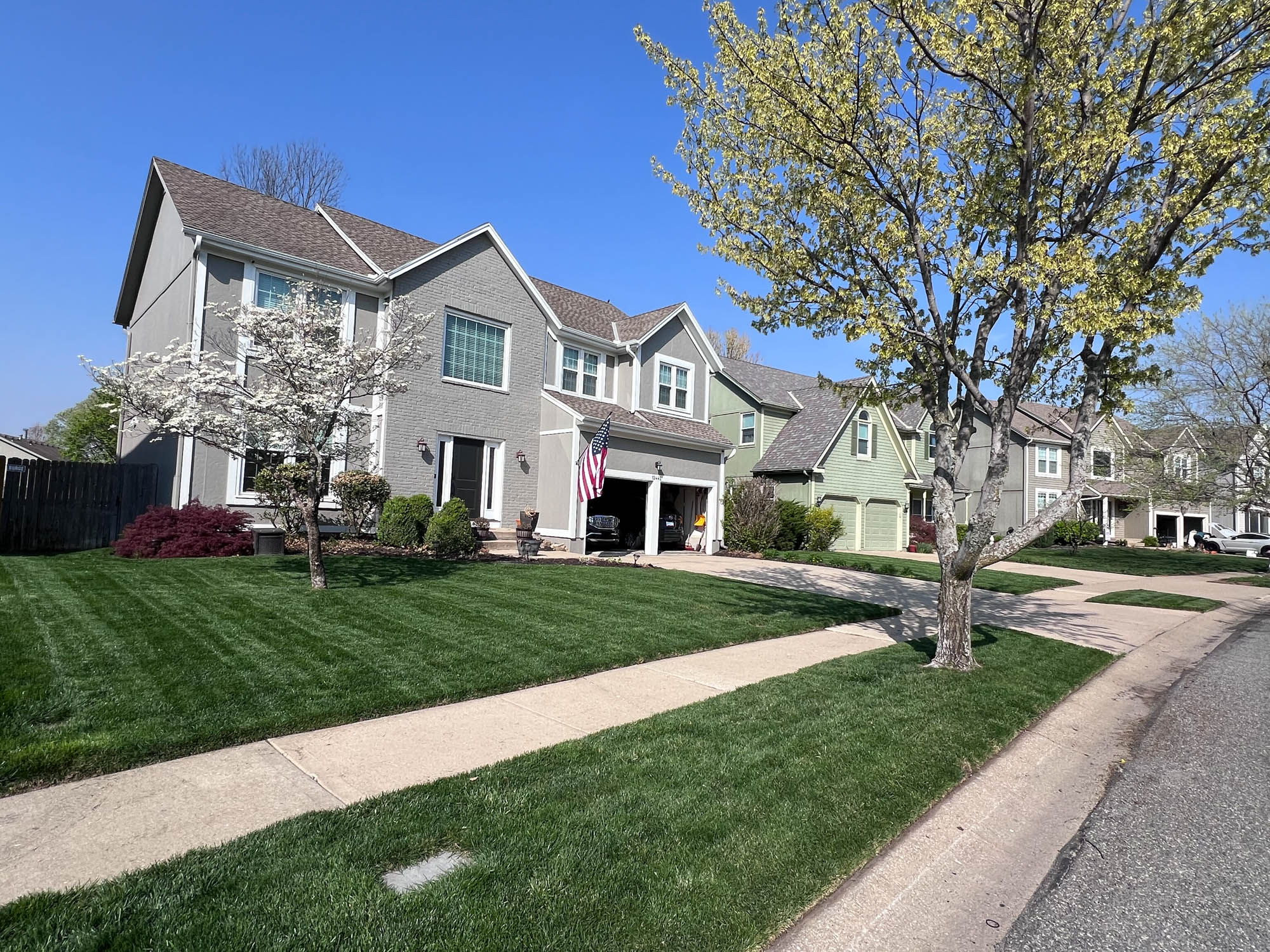


 “Multi-year idiot-proof program user, 3rd year of Bluewave fall renovations.”
“Multi-year idiot-proof program user, 3rd year of Bluewave fall renovations.”Brian K. (Overland Park, KS)
-
“Moved into our house and it was brown and not pretty! A few years later using mainly the Idiot Proof Program and awesome seed the yard is looking great!“
- Dustin P. (Olathe, Ks)

 “Moved into our house and it was brown and not pretty! A few years later using mainly the Idiot Proof Program and awesome seed the yard is looking great!“
“Moved into our house and it was brown and not pretty! A few years later using mainly the Idiot Proof Program and awesome seed the yard is looking great!“Dustin P. (Olathe, Ks)
-
“I was using a popular YouTube lawn care expert for years and buying my stuff online. I went in to Grass Pad to get some Milorganite and the guy talked me in to using the Idiot Proof Program for one year. I really respected how he did not talk the program down I was using.…
- Mike B. (Lee’s Summit, MO)

 “I was using a popular YouTube lawn care expert for years and buying my stuff online. I went in to Grass Pad to get some Milorganite and the guy talked me in to using the Idiot Proof Program for one year. I really respected how he did not talk the program down I was using. I gave it a try. I will never go anywhere else than Grass Pad again. Very impressed.”
“I was using a popular YouTube lawn care expert for years and buying my stuff online. I went in to Grass Pad to get some Milorganite and the guy talked me in to using the Idiot Proof Program for one year. I really respected how he did not talk the program down I was using. I gave it a try. I will never go anywhere else than Grass Pad again. Very impressed.”Mike B. (Lee’s Summit, MO)
-
“For a decade always had a lawn company come and treat the lawn, until one day on our Ring camera caught that they came to the door and two minutes later they left a bill without treating the lawn. So we no longer use their service. Last year we used an online subscription but it…
- Paul C. (Lenexa, Ks)
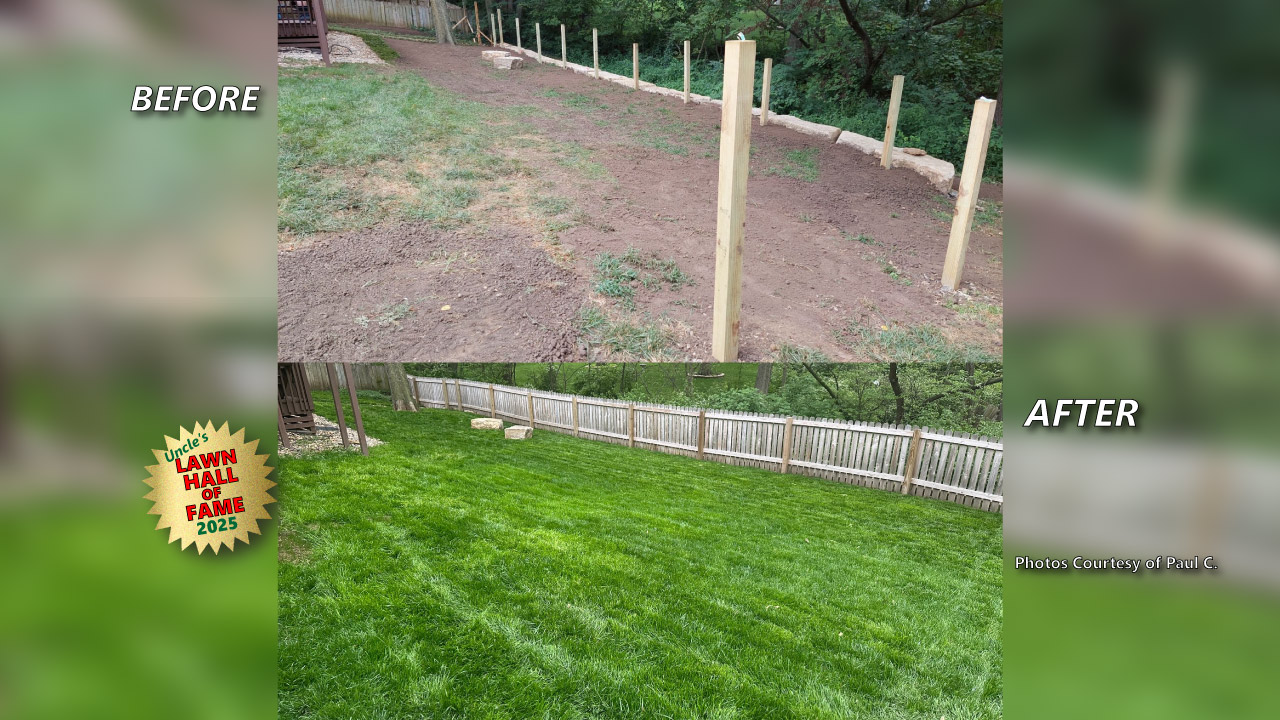
 “For a decade always had a lawn company come and treat the lawn, until one day on our Ring camera caught that they came to the door and two minutes later they left a bill without treating the lawn. So we no longer use their service. Last year we used an online subscription but it made our lawn worse. Early Spring my buddy invited me to a Grass Pad Lawn Seminar and I ended up winning the grand prize and won an Uncle’s Idiot Proof Lawn Program. The lawn now never looked so good and healthy.”
“For a decade always had a lawn company come and treat the lawn, until one day on our Ring camera caught that they came to the door and two minutes later they left a bill without treating the lawn. So we no longer use their service. Last year we used an online subscription but it made our lawn worse. Early Spring my buddy invited me to a Grass Pad Lawn Seminar and I ended up winning the grand prize and won an Uncle’s Idiot Proof Lawn Program. The lawn now never looked so good and healthy.”Paul C. (Lenexa, Ks)
-
Thanks for making my lawn look great! 3rd year of using the Idiot Proof Program and our family is enjoying an amazing looking yard! Very little effort and fantastic results.
- Rob C. (Shawnee, KS)



 Thanks for making my lawn look great! 3rd year of using the Idiot Proof Program and our family is enjoying an amazing looking yard! Very little effort and fantastic results.
Thanks for making my lawn look great! 3rd year of using the Idiot Proof Program and our family is enjoying an amazing looking yard! Very little effort and fantastic results.Rob C. (Shawnee, KS)
-
Grass Pad is my go to place for seed, fertilizer, sod to keep my yard looking great. Excited for 2024’s lawn applications and projects.
- Spencer W. (Lee’s Summit, MO)
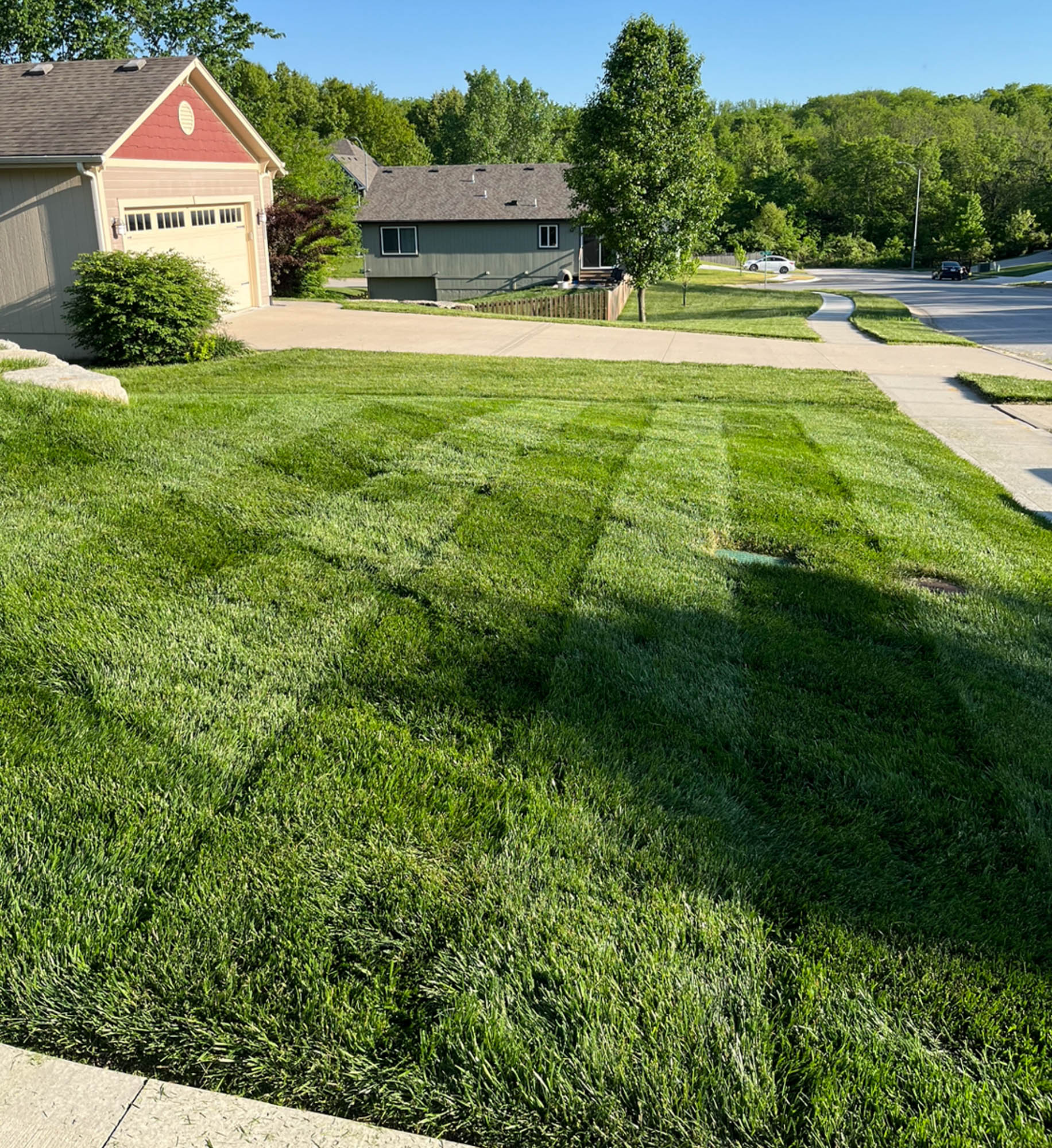


 Grass Pad is my go to place for seed, fertilizer, sod to keep my yard looking great. Excited for 2024’s lawn applications and projects.
Grass Pad is my go to place for seed, fertilizer, sod to keep my yard looking great. Excited for 2024’s lawn applications and projects.Spencer W. (Lee’s Summit, MO)
-
I have worked very hard on renovating this lawn! It was a previously a patchy, weed filled mess. With the help of the amazing team at Grass Pad I am confident and excited with continuing this journey! I am officially a lawn girl!
- Valerie J. (Lee’s Summit, MO)
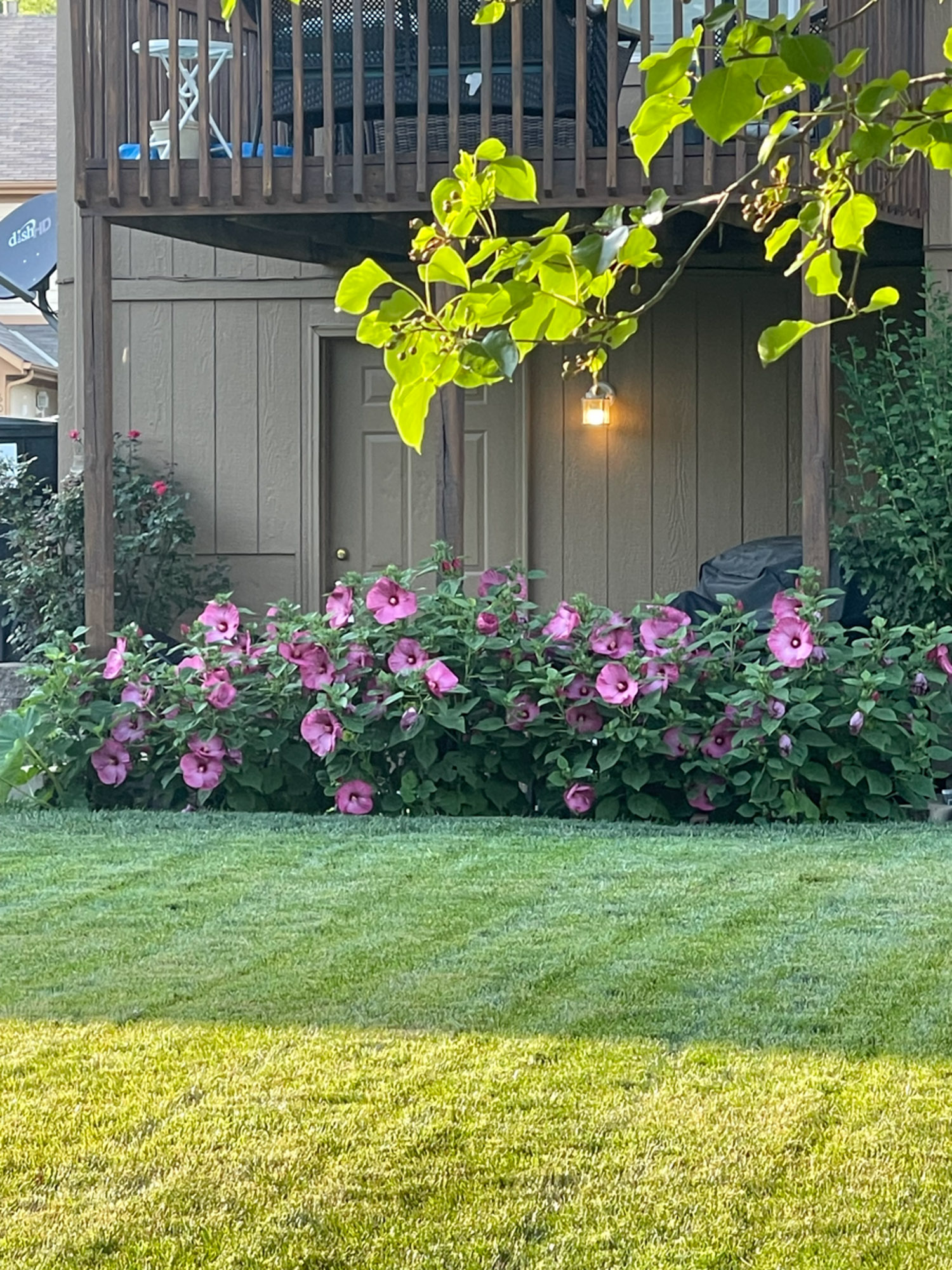


 I have worked very hard on renovating this lawn! It was a previously a patchy, weed filled mess. With the help of the amazing team at Grass Pad I am confident and excited with continuing this journey! I am officially a lawn girl!
I have worked very hard on renovating this lawn! It was a previously a patchy, weed filled mess. With the help of the amazing team at Grass Pad I am confident and excited with continuing this journey! I am officially a lawn girl!Valerie J. (Lee’s Summit, MO)
-
I’ve been using Grasspad’s products for years and couldn’t be more thrilled with the results. Between the high quality seed, pre-emergent and fertilizers, GP has everything you need to get your lawn looking the best in the neighborhood!
- Brady K. (Olathe, KS)



 I’ve been using Grasspad’s products for years and couldn’t be more thrilled with the results. Between the high quality seed, pre-emergent and fertilizers, GP has everything you need to get your lawn looking the best in the neighborhood!
I’ve been using Grasspad’s products for years and couldn’t be more thrilled with the results. Between the high quality seed, pre-emergent and fertilizers, GP has everything you need to get your lawn looking the best in the neighborhood!Brady K. (Olathe, KS)
-
Your staff and products have allowed me to have one of the best yards in the neighborhood with minimal effort. It’s truly Idiot Proof! Ha!
- Mark G. (Weston, MO)
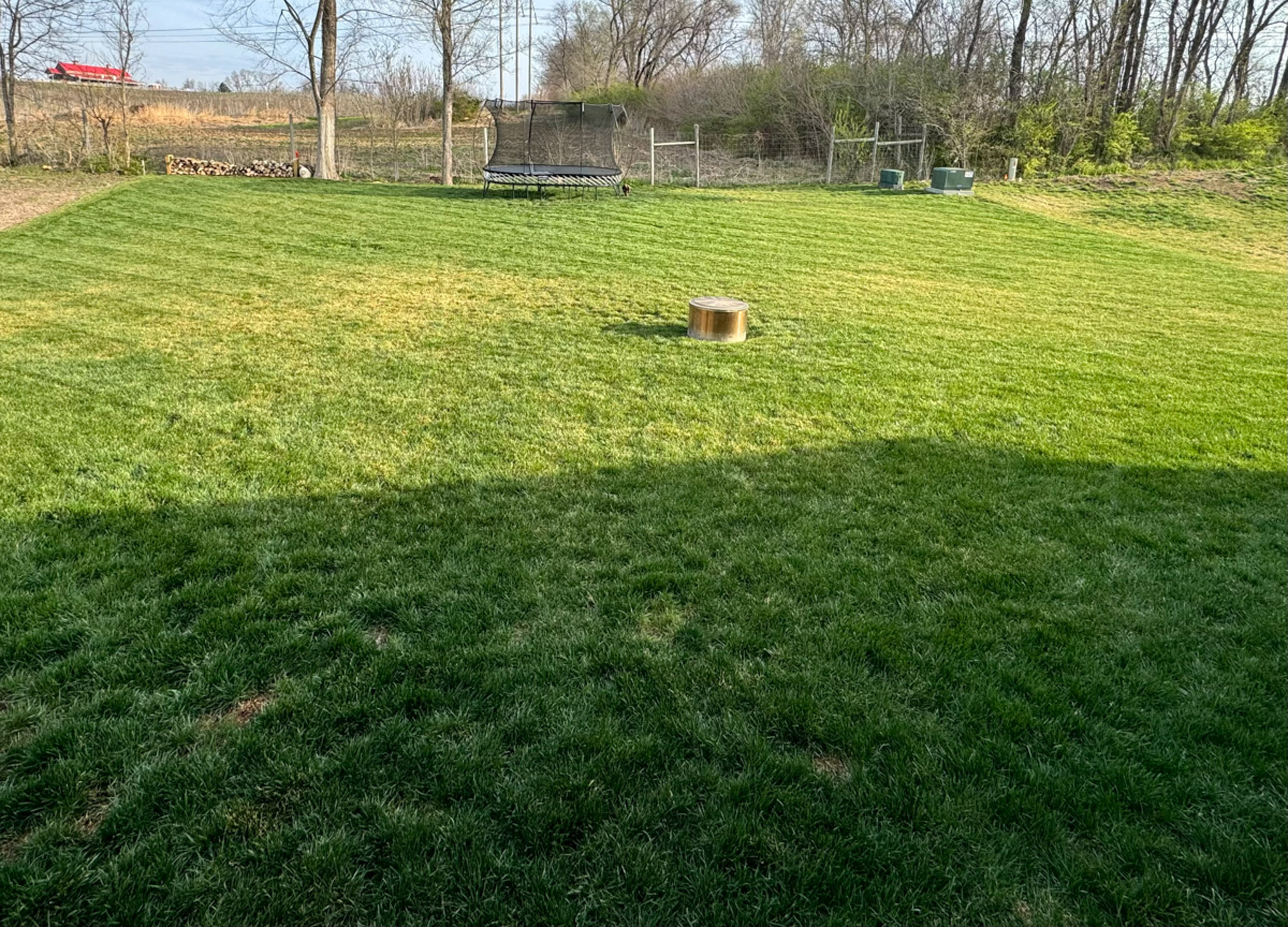


 Your staff and products have allowed me to have one of the best yards in the neighborhood with minimal effort. It’s truly Idiot Proof! Ha!
Your staff and products have allowed me to have one of the best yards in the neighborhood with minimal effort. It’s truly Idiot Proof! Ha!Mark G. (Weston, MO)
-
Only the best from grasspad, our 2.5 yr old sod hasn’t seen anything else! 10th cut of 2024 and it’s not even April yet. 😬
- Mike K. (Independence, MO)



 Only the best from grasspad, our 2.5 yr old sod hasn’t seen anything else! 10th cut of 2024 and it’s not even April yet. 😬
Only the best from grasspad, our 2.5 yr old sod hasn’t seen anything else! 10th cut of 2024 and it’s not even April yet. 😬Mike K. (Independence, MO)
-
I have used Grass Pad the last 4 years and my lawn has never looked better.
- Jared H. (Blue Springs, MO)
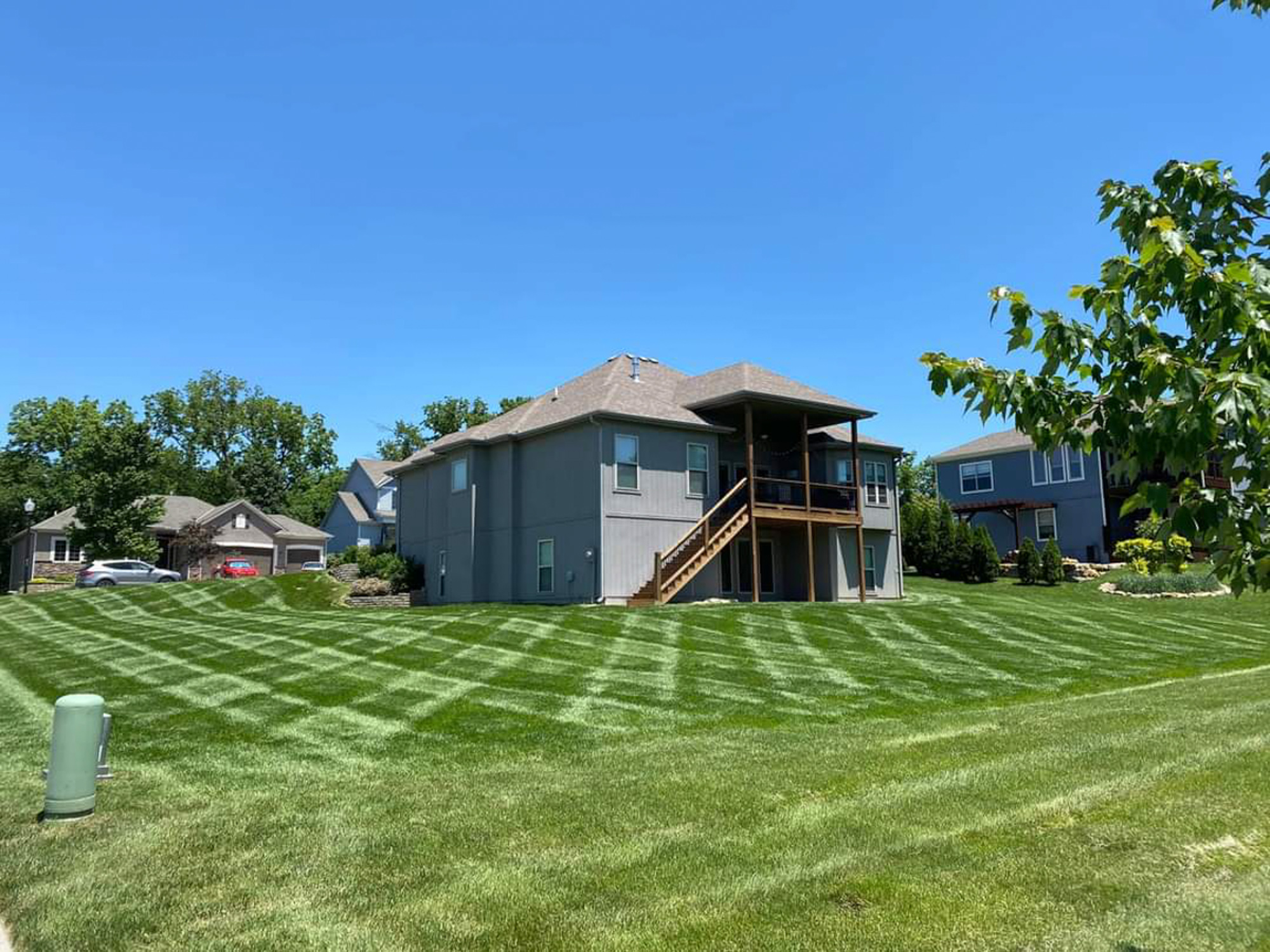


 I have used Grass Pad the last 4 years and my lawn has never looked better.
I have used Grass Pad the last 4 years and my lawn has never looked better.Jared H. (Blue Springs, MO)
-
I moved into a new home in 2020, and the yard was absolutely horrible. Filled with 20 different grasses, tall wide blade fescues and Pasture type grass, that always looked like crap. I did a full front and side lawn. Renovation in 2022 converting to your estate mix. My neighbors were very concerned once they…
- Steve W.



 I moved into a new home in 2020, and the yard was absolutely horrible. Filled with 20 different grasses, tall wide blade fescues and Pasture type grass, that always looked like crap. I did a full front and side lawn. Renovation in 2022 converting to your estate mix. My neighbors were very concerned once they saw my dead lawn in the middle of the summer 2022. Lots of discussion in the neighborhood about my choice to kill all of my grass and not much support in expecting a good result. Much to their surprise My renovation went well and now my lawn is a conversation piece. And I have met more people in my neighborhood discussing this lawn in the last 2 years then I had in the previous two years.
I moved into a new home in 2020, and the yard was absolutely horrible. Filled with 20 different grasses, tall wide blade fescues and Pasture type grass, that always looked like crap. I did a full front and side lawn. Renovation in 2022 converting to your estate mix. My neighbors were very concerned once they saw my dead lawn in the middle of the summer 2022. Lots of discussion in the neighborhood about my choice to kill all of my grass and not much support in expecting a good result. Much to their surprise My renovation went well and now my lawn is a conversation piece. And I have met more people in my neighborhood discussing this lawn in the last 2 years then I had in the previous two years.Steve W.
-
Have been using Grass Pad for a few years now. Started using it at our old house and why switch with our new house. These are the results. I just love the results.
- Alfred P. (Lee’s Summit, MO)



 Have been using Grass Pad for a few years now. Started using it at our old house and why switch with our new house. These are the results. I just love the results.
Have been using Grass Pad for a few years now. Started using it at our old house and why switch with our new house. These are the results. I just love the results.Alfred P. (Lee’s Summit, MO)
-
I have been using GrassPad products for about the past 5 years. I do the idiot proof plus program. My lawn has never looked so good.
- Troy S. (Olathe, KS)
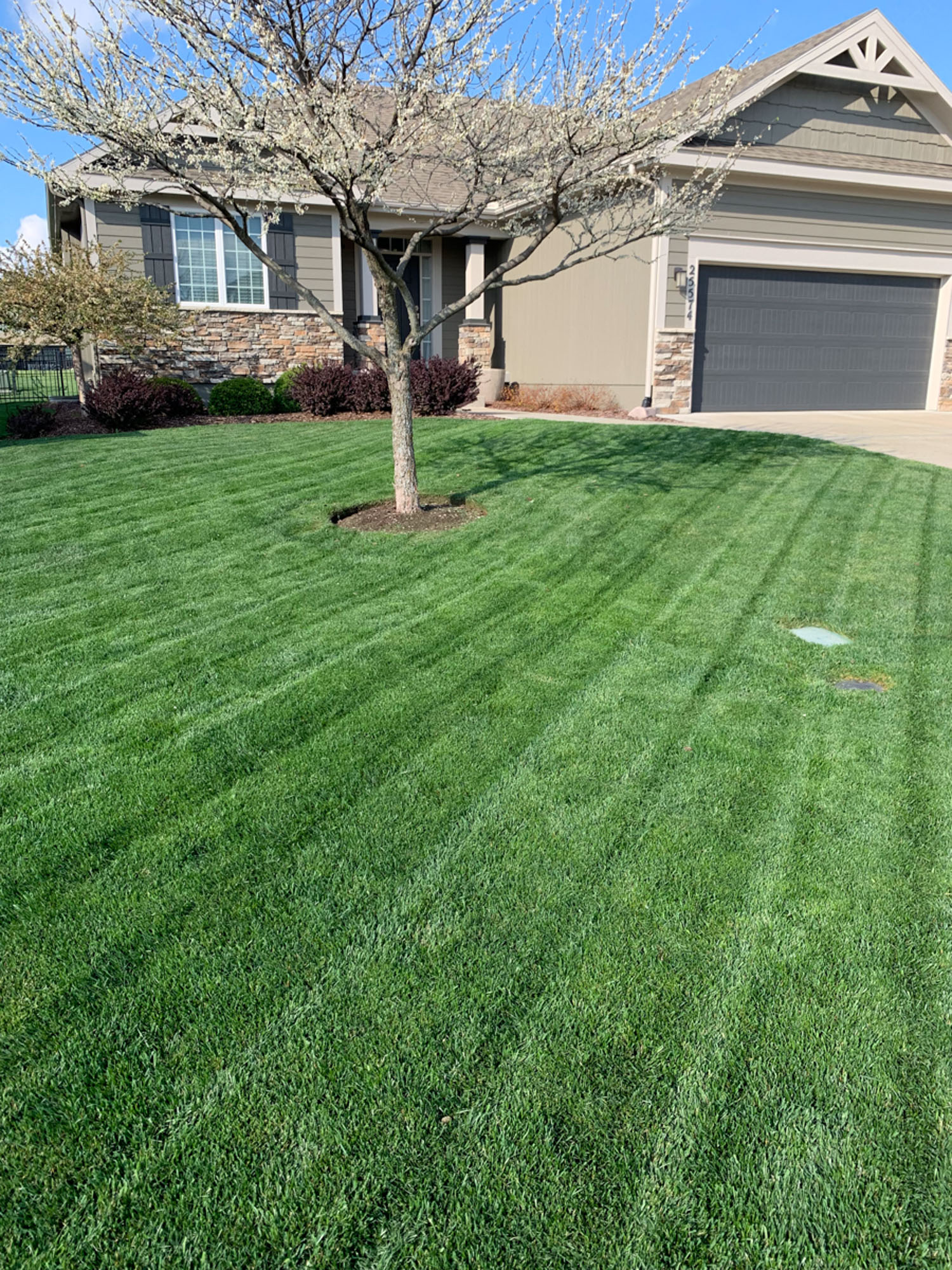


 I have been using GrassPad products for about the past 5 years. I do the idiot proof plus program. My lawn has never looked so good.
I have been using GrassPad products for about the past 5 years. I do the idiot proof plus program. My lawn has never looked so good.Troy S. (Olathe, KS)
-
I have been using the 15,000 5 step Seed Safe Program with grub killer and Estate Mix grass seed for a few years now. Love the results!!
- Matt N. (Elkhorn, NE)
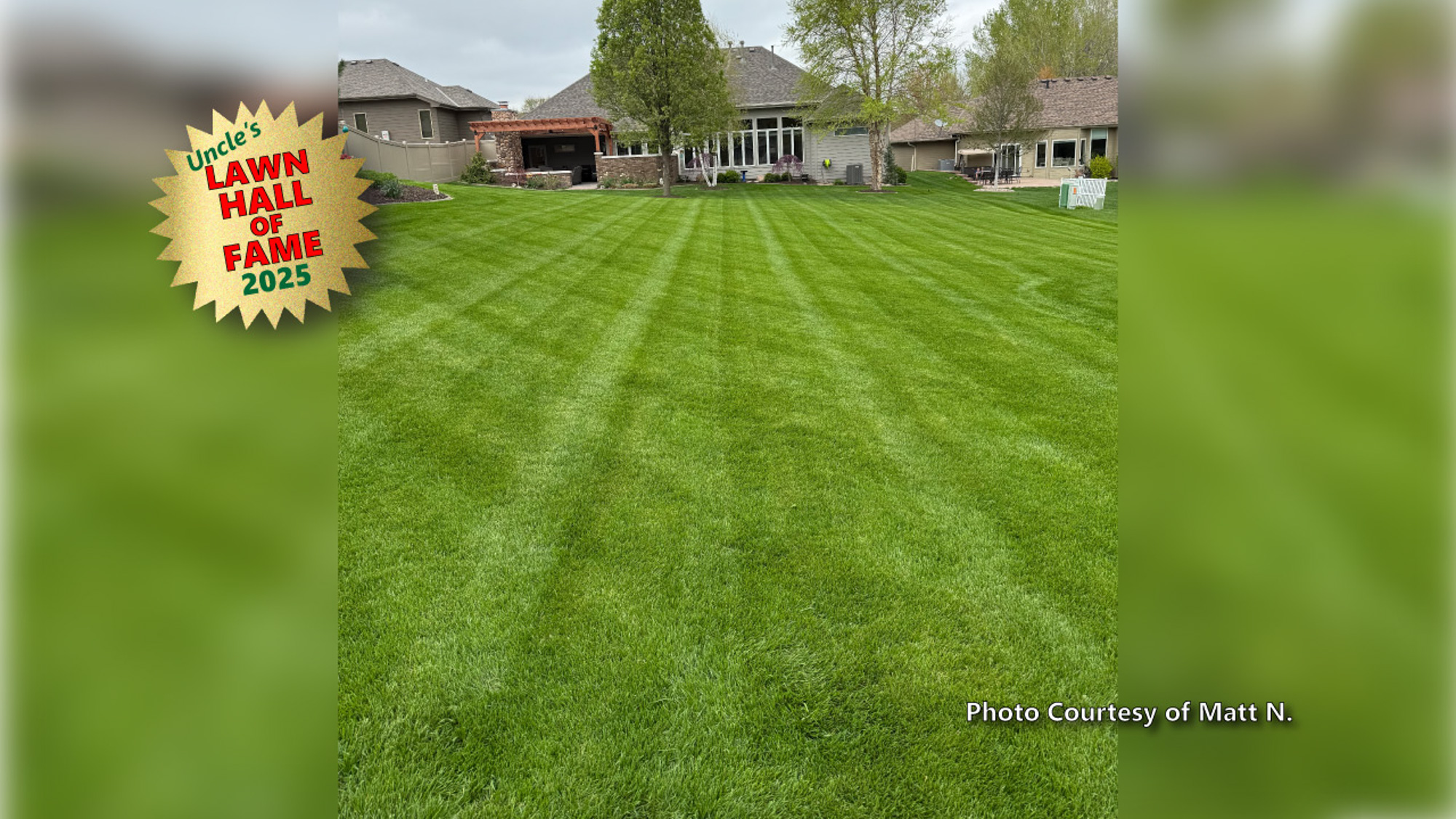
 I have been using the 15,000 5 step Seed Safe Program with grub killer and Estate Mix grass seed for a few years now. Love the results!!
I have been using the 15,000 5 step Seed Safe Program with grub killer and Estate Mix grass seed for a few years now. Love the results!!Matt N. (Elkhorn, NE)
-
I started using Grass Pads products about 6 years ago by enrolling in “Uncles Idiot Proof” program and my results have been outstanding. I have won our subdivision’s yard if the month 2 years straight.
- Jerry F. (Lee’s Summit MO)



 I started using Grass Pads products about 6 years ago by enrolling in “Uncles Idiot Proof” program and my results have been outstanding. I have won our subdivision’s yard if the month 2 years straight.
I started using Grass Pads products about 6 years ago by enrolling in “Uncles Idiot Proof” program and my results have been outstanding. I have won our subdivision’s yard if the month 2 years straight.Jerry F. (Lee’s Summit MO)
-
Started using the Grass Pad when we bought our first home. Had to completely redo the yard and had amazing results. So naturally when our new home was built, I didn’t change a thing. Blue Wave bluegrass and your fertilizer plan makes for one of the best yards in the neighborhood.
- Zach C. (Bennington, NE)
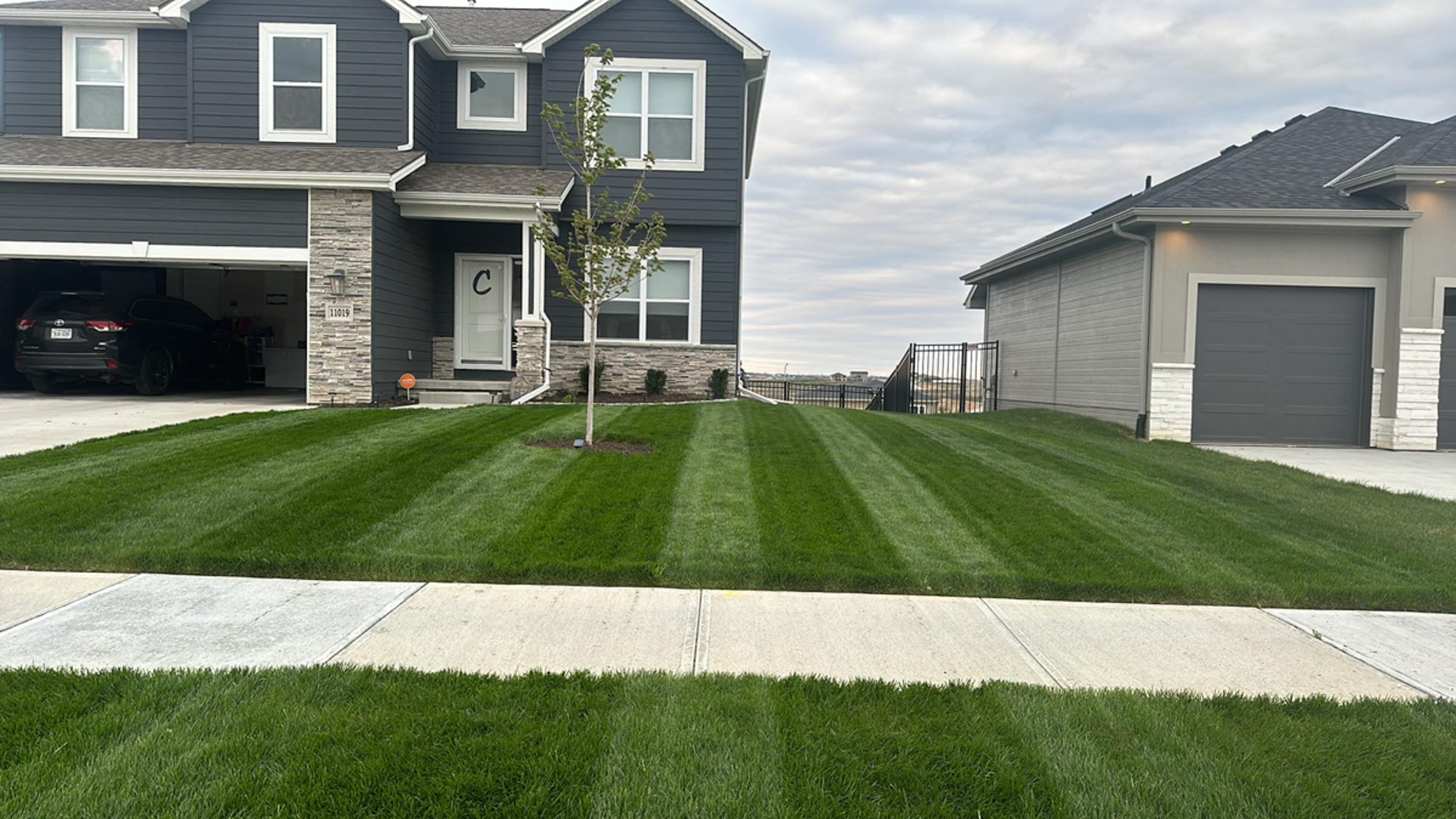


 Started using the Grass Pad when we bought our first home. Had to completely redo the yard and had amazing results. So naturally when our new home was built, I didn’t change a thing. Blue Wave bluegrass and your fertilizer plan makes for one of the best yards in the neighborhood.
Started using the Grass Pad when we bought our first home. Had to completely redo the yard and had amazing results. So naturally when our new home was built, I didn’t change a thing. Blue Wave bluegrass and your fertilizer plan makes for one of the best yards in the neighborhood.Zach C. (Bennington, NE)
-
I’m on my 3rd year using the Idiot proof program and could not be any happier on how my yard is looking. I can’t tell you how many compliments I get from people that drive and walk by, they actually stop to and want to talk grass! Sometimes I have to cut that conversation short…
- Shawn L. (Grain Valley, MO)
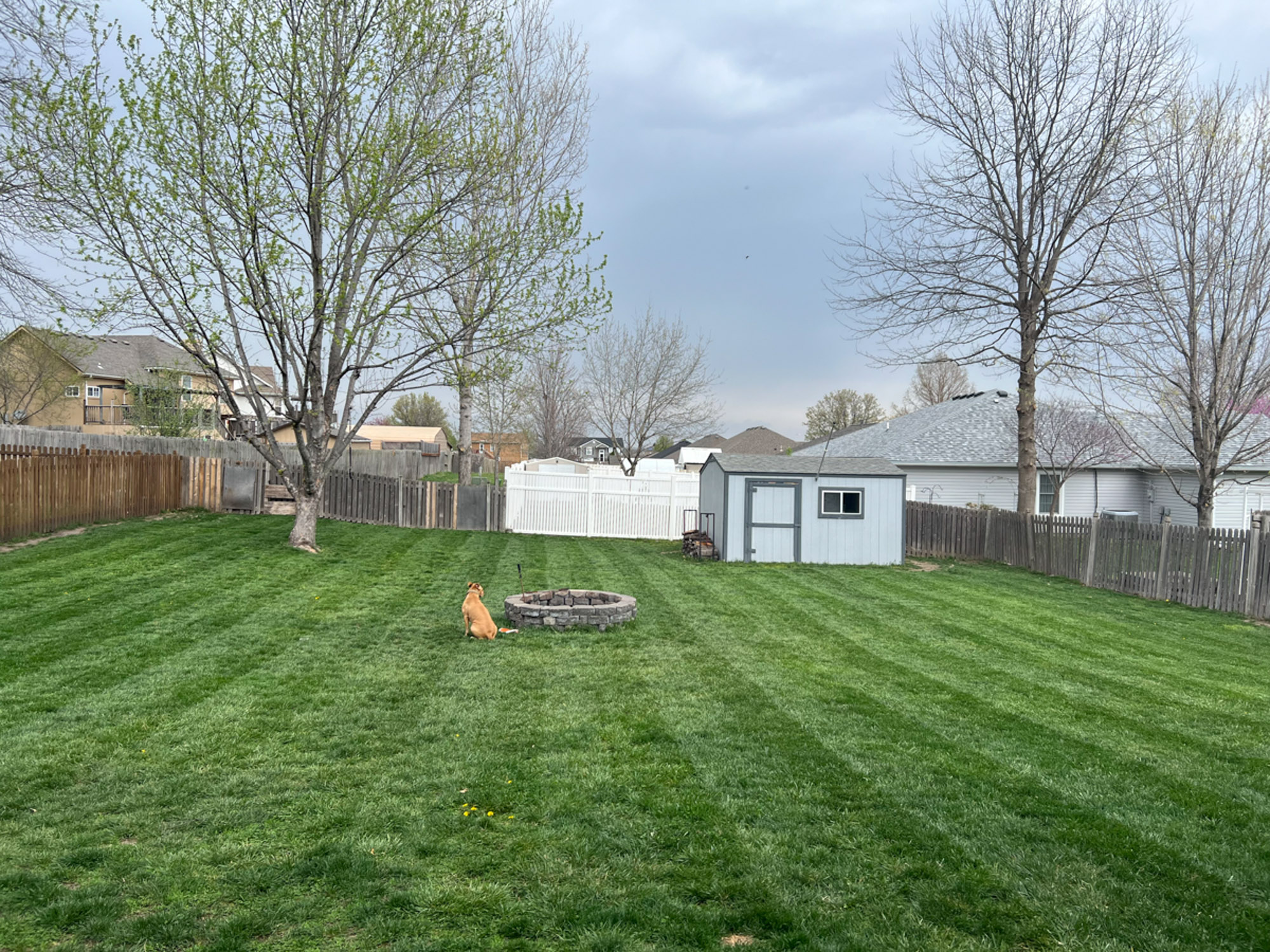


 I’m on my 3rd year using the Idiot proof program and could not be any happier on how my yard is looking. I can’t tell you how many compliments I get from people that drive and walk by, they actually stop to and want to talk grass! Sometimes I have to cut that conversation short because I have a lawn to take care of! :)… A “BIG” Thank you to the Grass pad Team/Staff for all their great advice and products!
I’m on my 3rd year using the Idiot proof program and could not be any happier on how my yard is looking. I can’t tell you how many compliments I get from people that drive and walk by, they actually stop to and want to talk grass! Sometimes I have to cut that conversation short because I have a lawn to take care of! :)… A “BIG” Thank you to the Grass pad Team/Staff for all their great advice and products!Shawn L. (Grain Valley, MO)
-
I’ve been using ONLY Grass Pad products since we bought our first home in Mission in 2013. Now in Overland Park, still following Uncle’s program. Last several years, been transitioning a TTTF/bluegrass mix lawn to all bluegrass using Wildhorse. Here are the early season results after mowing on 04/27/2024. THANKS to all the incredibly friendly…
- Brian B. (Overland Park, KS)
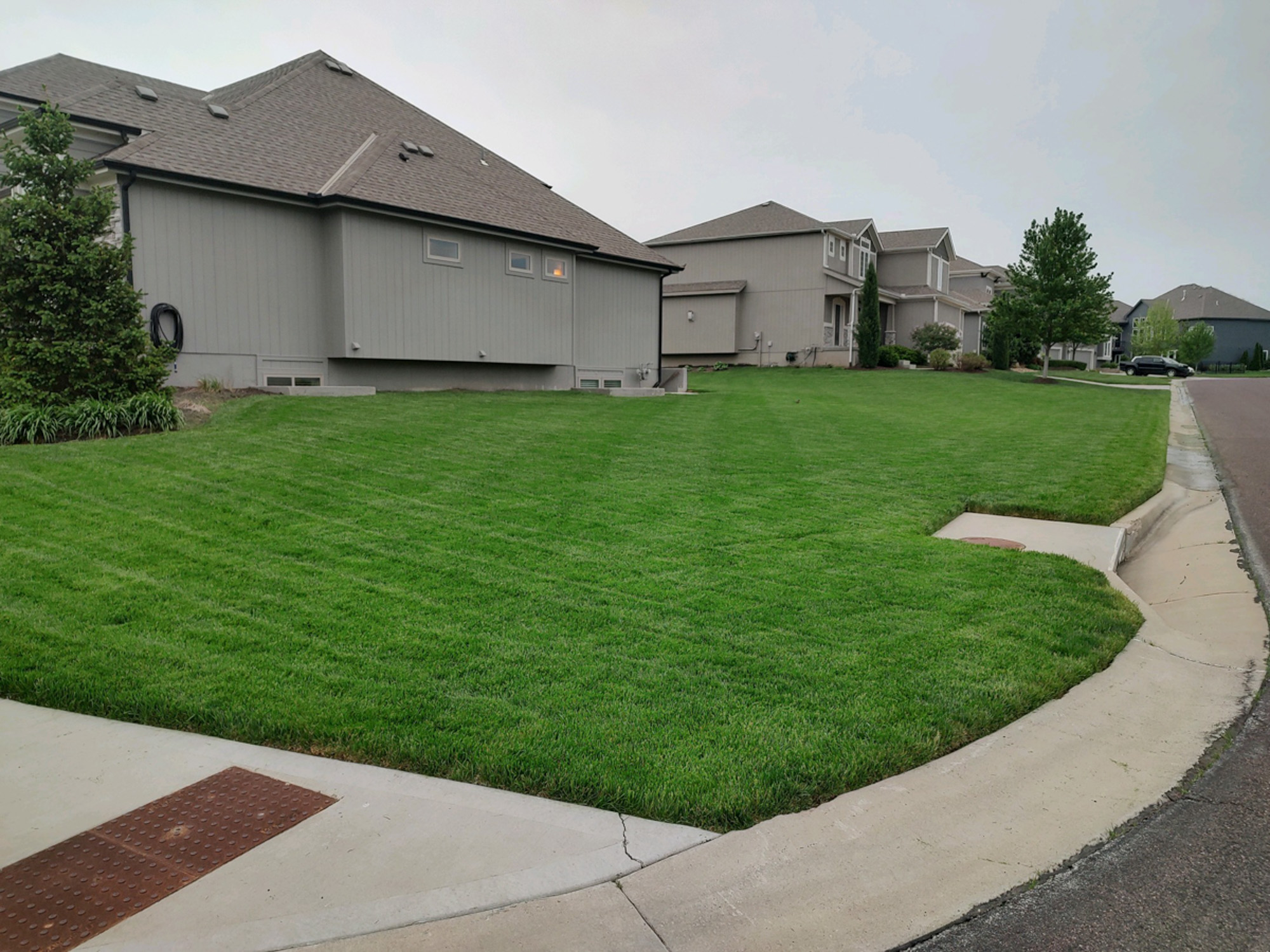


 I’ve been using ONLY Grass Pad products since we bought our first home in Mission in 2013. Now in Overland Park, still following Uncle’s program. Last several years, been transitioning a TTTF/bluegrass mix lawn to all bluegrass using Wildhorse. Here are the early season results after mowing on 04/27/2024. THANKS to all the incredibly friendly and helpful folks at Olathe Grass Pad!!!!! :)
I’ve been using ONLY Grass Pad products since we bought our first home in Mission in 2013. Now in Overland Park, still following Uncle’s program. Last several years, been transitioning a TTTF/bluegrass mix lawn to all bluegrass using Wildhorse. Here are the early season results after mowing on 04/27/2024. THANKS to all the incredibly friendly and helpful folks at Olathe Grass Pad!!!!! :)Brian B. (Overland Park, KS)
-
I’ve been using Grass Pad for over 10 years and I’m very happy with their products. Using the Idiot Proof Lawn Care Program, along with some hard work and water, you’ll be amazed at what your lawn will look like!
- Luke P. (Kearney, MO)
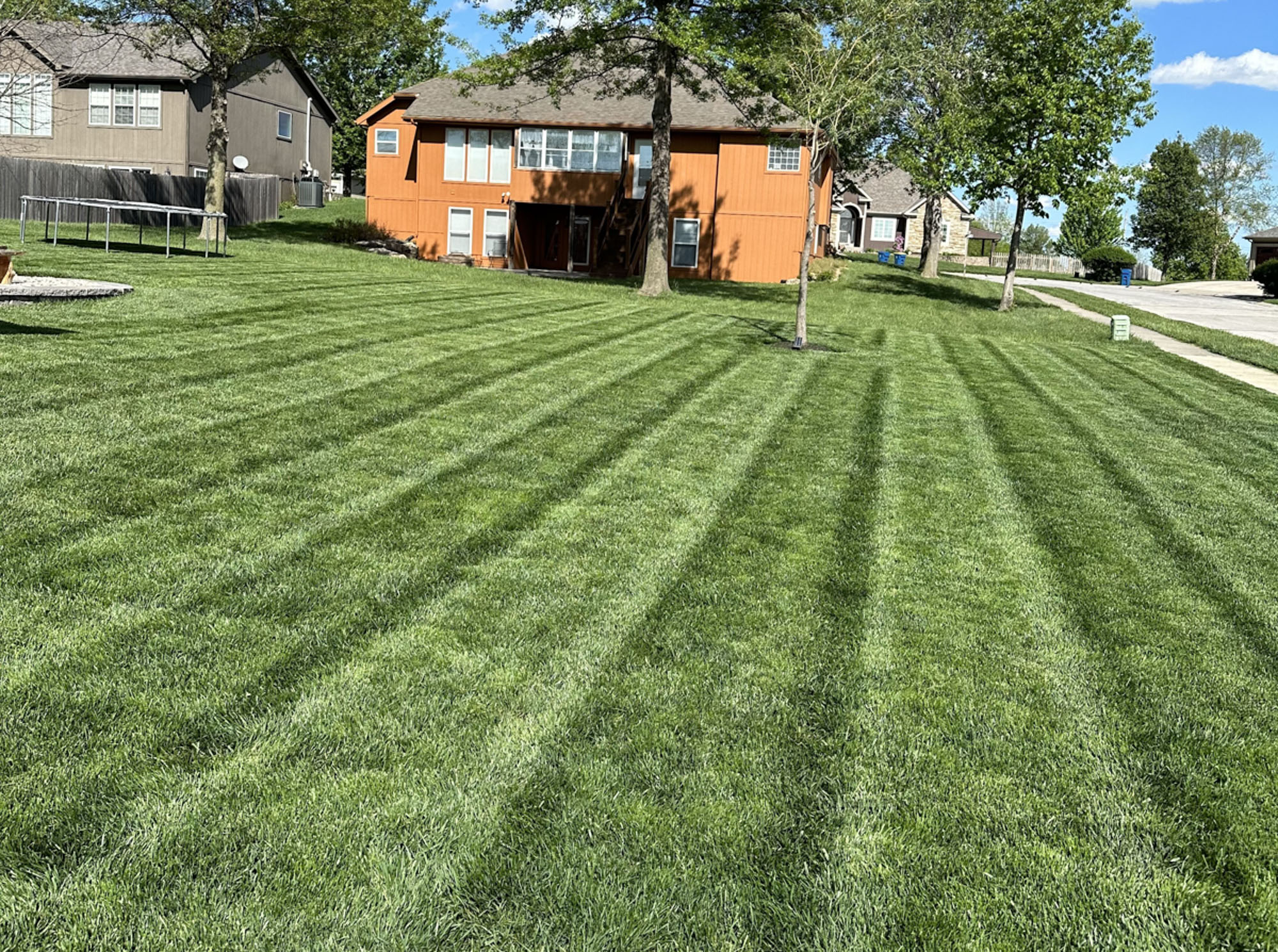


 I’ve been using Grass Pad for over 10 years and I’m very happy with their products. Using the Idiot Proof Lawn Care Program, along with some hard work and water, you’ll be amazed at what your lawn will look like!
I’ve been using Grass Pad for over 10 years and I’m very happy with their products. Using the Idiot Proof Lawn Care Program, along with some hard work and water, you’ll be amazed at what your lawn will look like!Luke P. (Kearney, MO)
-
Started using The Idiot Proof system about 10 years ago when we bought our first home. Since our kids have gotten so busy I haven’t been the best at keeping up with lawn care, but I always get most apps down each year. So far this year, despite getting fiber cable ran through our yard,…
- Drew. B (Gardner, KS)
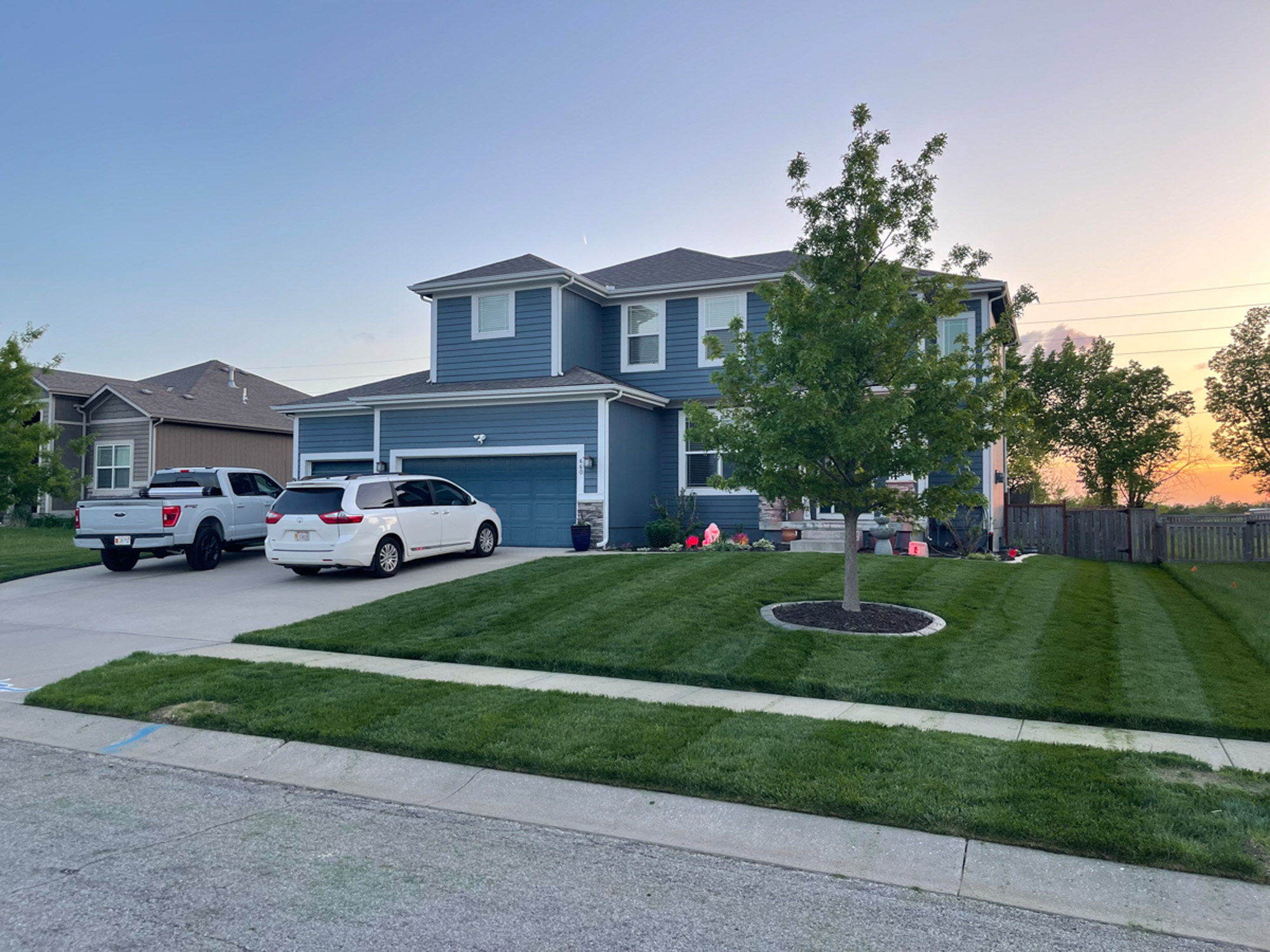


 Started using The Idiot Proof system about 10 years ago when we bought our first home. Since our kids have gotten so busy I haven’t been the best at keeping up with lawn care, but I always get most apps down each year. So far this year, despite getting fiber cable ran through our yard, this rain has made our yard so happy! Happy Mowing, LCNs!
Started using The Idiot Proof system about 10 years ago when we bought our first home. Since our kids have gotten so busy I haven’t been the best at keeping up with lawn care, but I always get most apps down each year. So far this year, despite getting fiber cable ran through our yard, this rain has made our yard so happy! Happy Mowing, LCNs!Drew. B (Gardner, KS)
-
When I bought my house it was a dirt track and full of weeds. Hauled 250 bags of leaves, trash, weeds, limbs out of what are now rock beds. Had to kill everything in the yard because it was more weeds than grass. Now I’m here with a beautiful yard. Best yard on the block!!…
- Jay P. (Lee’s Summit, MO)
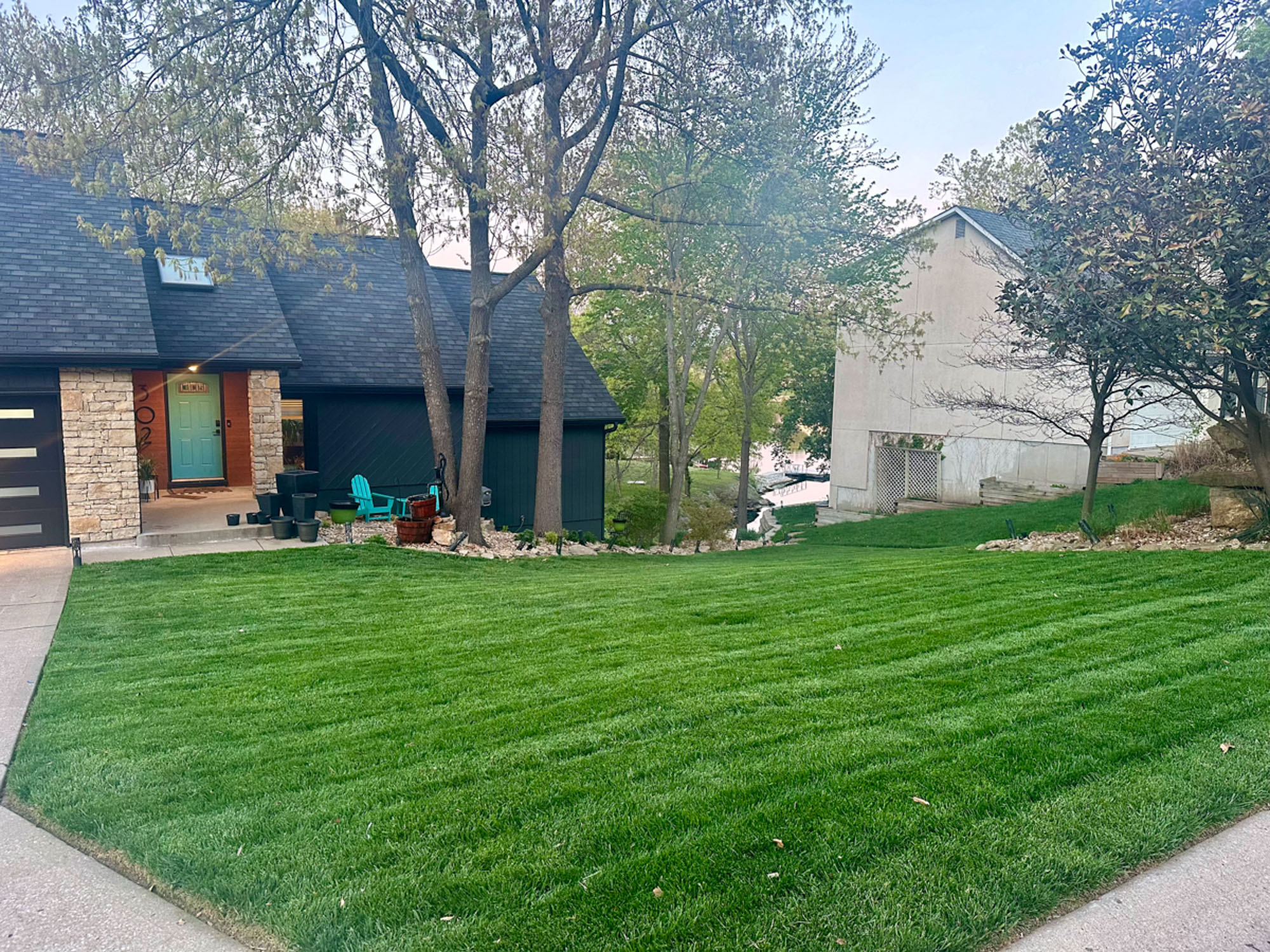


 When I bought my house it was a dirt track and full of weeds. Hauled 250 bags of leaves, trash, weeds, limbs out of what are now rock beds. Had to kill everything in the yard because it was more weeds than grass. Now I’m here with a beautiful yard. Best yard on the block!! Thanks to Grass Pad’s seed and products!!
When I bought my house it was a dirt track and full of weeds. Hauled 250 bags of leaves, trash, weeds, limbs out of what are now rock beds. Had to kill everything in the yard because it was more weeds than grass. Now I’m here with a beautiful yard. Best yard on the block!! Thanks to Grass Pad’s seed and products!!Jay P. (Lee’s Summit, MO)
-
The Grass Pad program is the best only way to go.
- Justin A. (Lee’s Summit, MO)
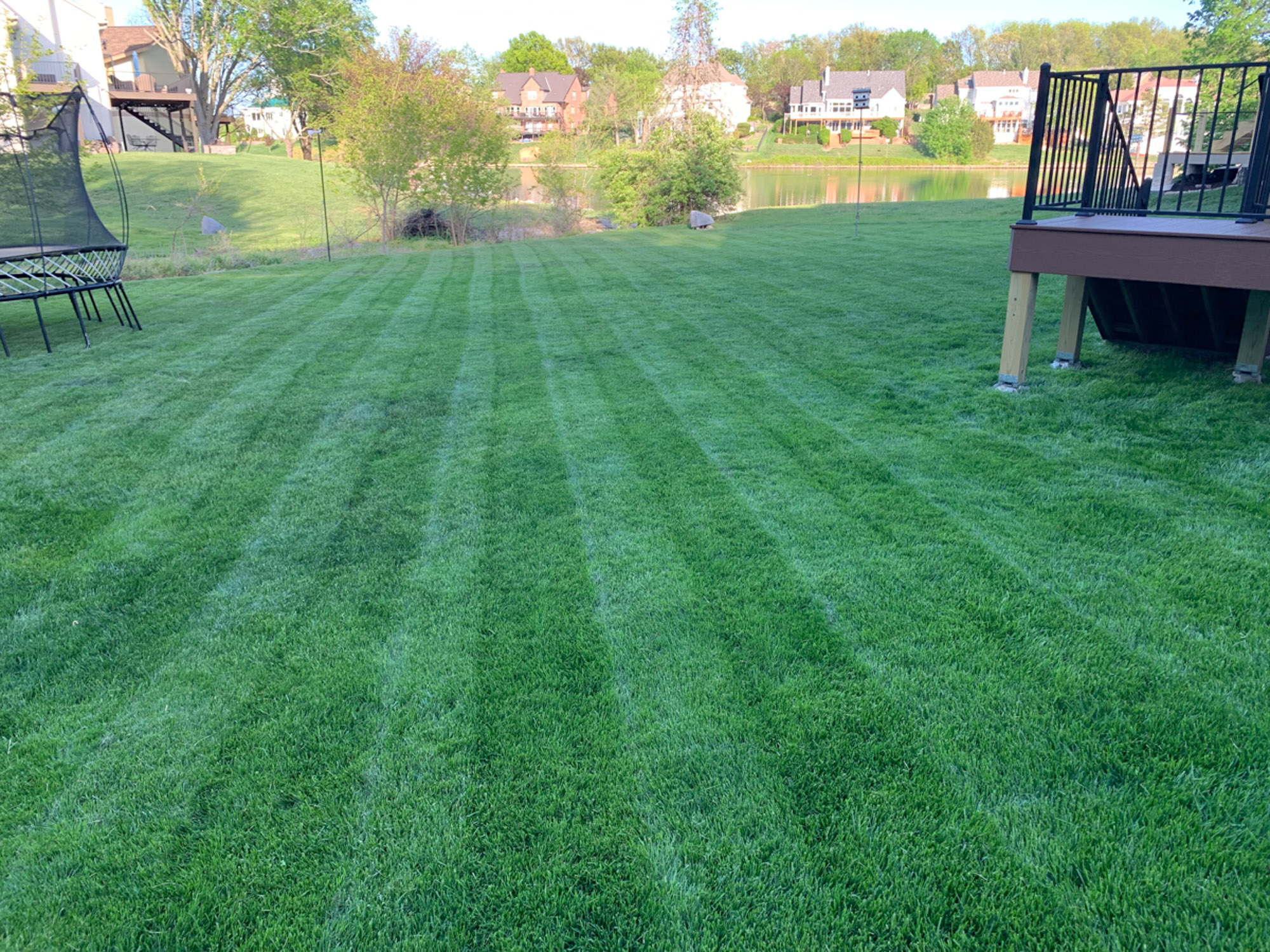


 The Grass Pad program is the best only way to go.
The Grass Pad program is the best only way to go.Justin A. (Lee’s Summit, MO)
-
I tell anyone who will listen about the great products from Grass Pad (C20, 18-5-9, etc) and the Idiot Proof Program. Year after year they keep me ahead of the pack.
- Mark B. (Leawood, KS)
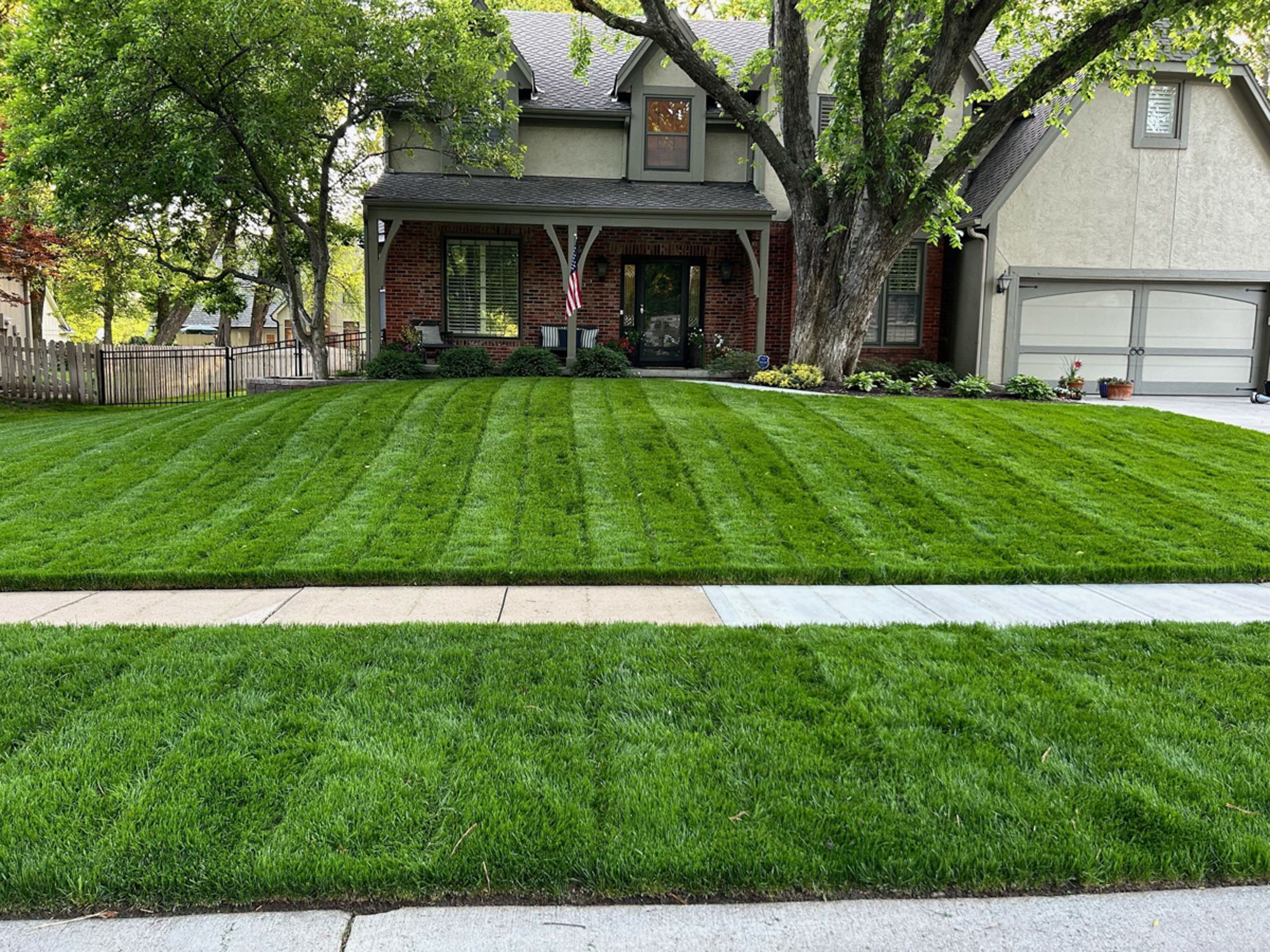


 I tell anyone who will listen about the great products from Grass Pad (C20, 18-5-9, etc) and the Idiot Proof Program. Year after year they keep me ahead of the pack.
I tell anyone who will listen about the great products from Grass Pad (C20, 18-5-9, etc) and the Idiot Proof Program. Year after year they keep me ahead of the pack.Mark B. (Leawood, KS)
-
Started lawn renovation last year with dethatch, aeration and overseedind with macho mix and used your fertilizer. This spring I worked on the remaining bare spots and used your idiot proof program. I have never been happier with this process. Our lawn was terrible when we bought this home a year and a half ago…
- Terri M. (Olathe, KS)
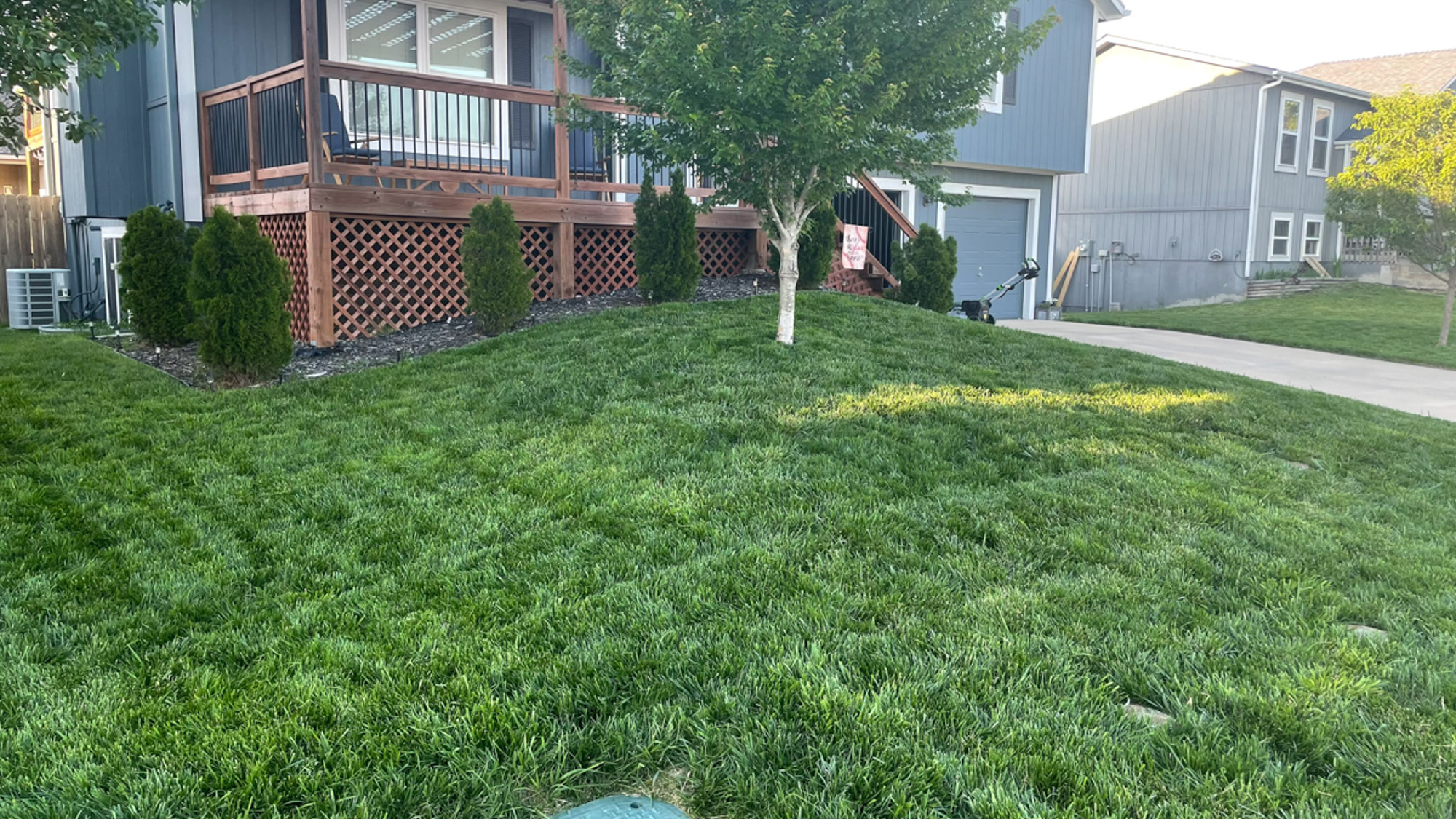


 Started lawn renovation last year with dethatch, aeration and overseedind with macho mix and used your fertilizer. This spring I worked on the remaining bare spots and used your idiot proof program. I have never been happier with this process. Our lawn was terrible when we bought this home a year and a half ago and now we get compliments on it all the time!
Started lawn renovation last year with dethatch, aeration and overseedind with macho mix and used your fertilizer. This spring I worked on the remaining bare spots and used your idiot proof program. I have never been happier with this process. Our lawn was terrible when we bought this home a year and a half ago and now we get compliments on it all the time!Terri M. (Olathe, KS)
-
Spring has sprung and the grass is coming alive! I added some heatwave to the bluegrass this year and it’s really going! Threw down some circle stripes and I think it looks great! Get out there and experiment!
- Marcus M. (Lee’s Summit, MO)
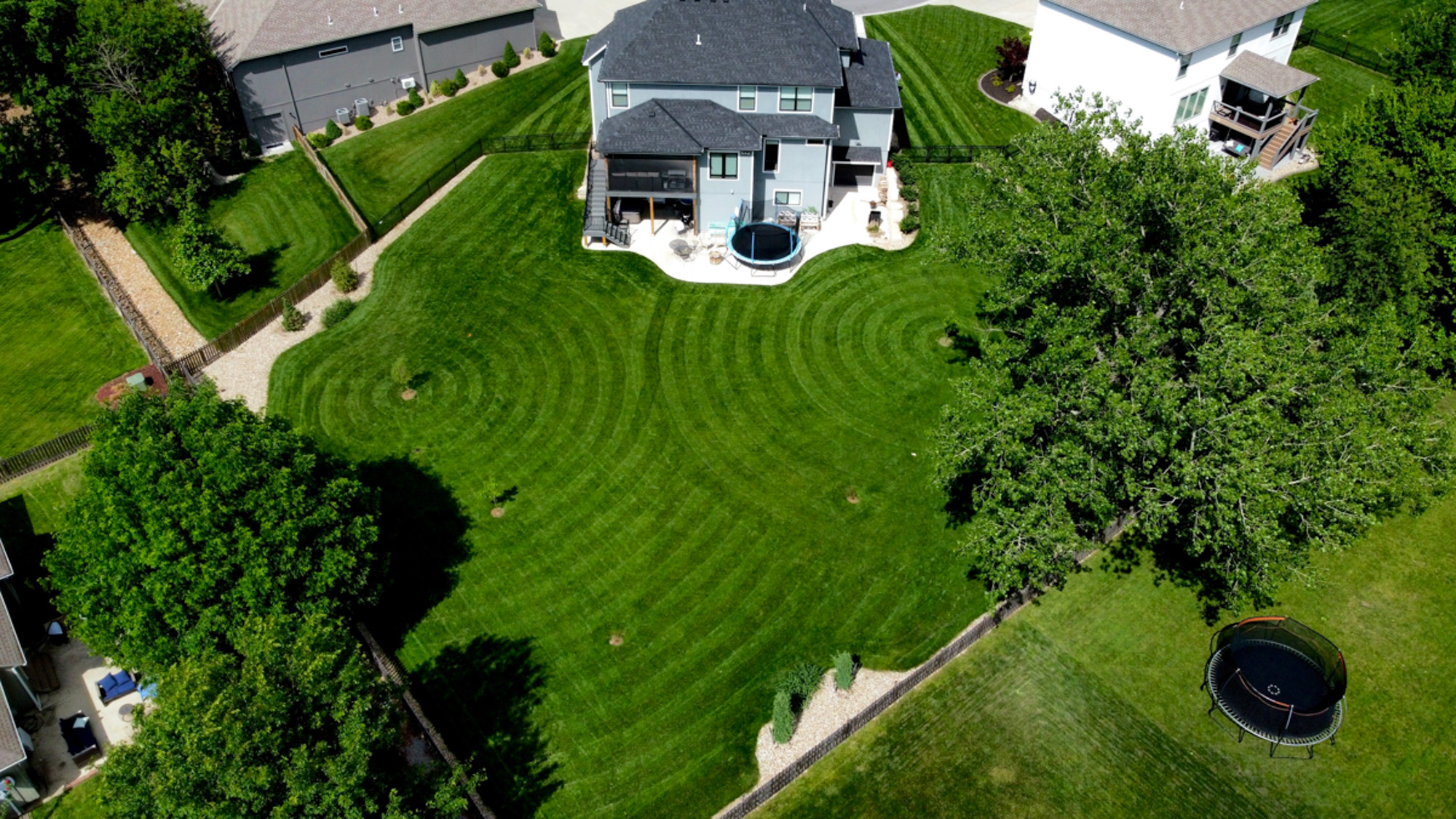


 Spring has sprung and the grass is coming alive! I added some heatwave to the bluegrass this year and it’s really going! Threw down some circle stripes and I think it looks great! Get out there and experiment!
Spring has sprung and the grass is coming alive! I added some heatwave to the bluegrass this year and it’s really going! Threw down some circle stripes and I think it looks great! Get out there and experiment!Marcus M. (Lee’s Summit, MO)
